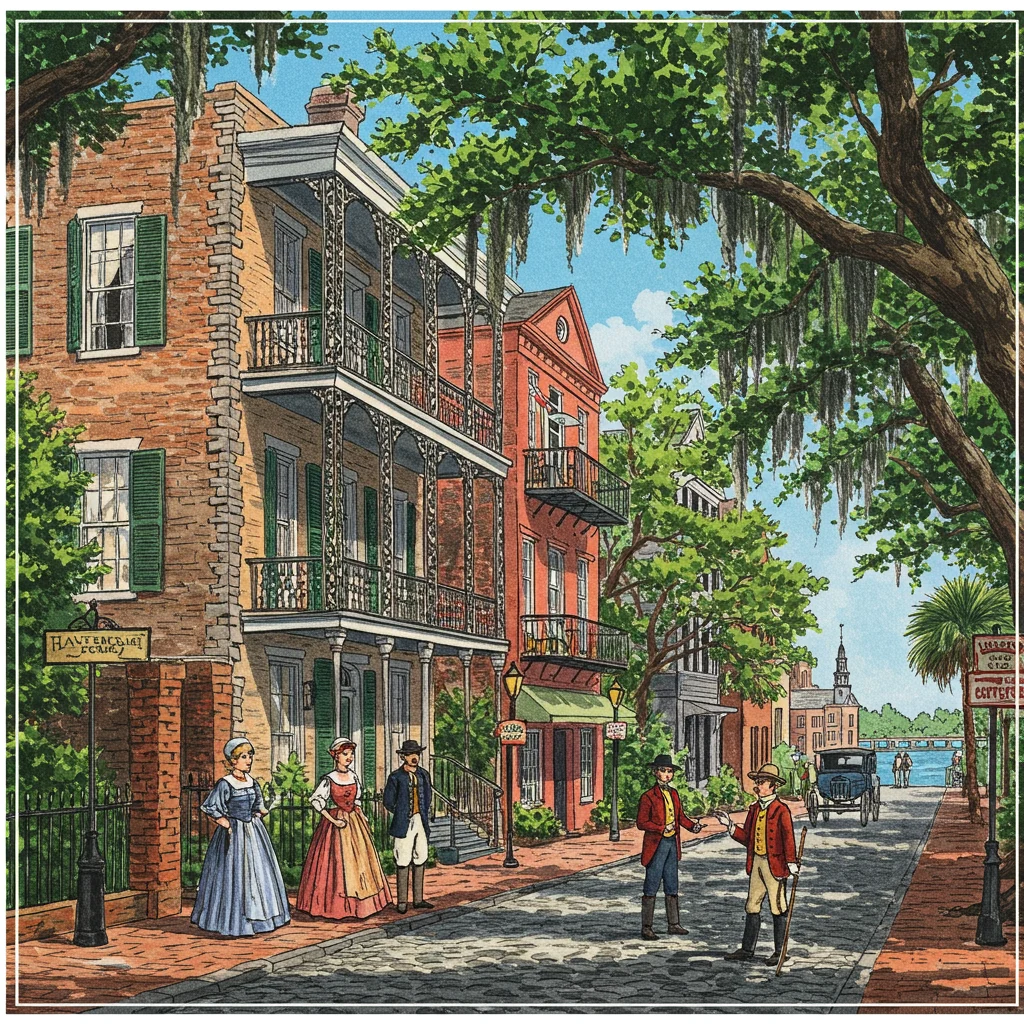Introduction to Historical Architecture Tours in Savannah and Charleston
Savannah and Charleston stand as two of the most visually stunning and historically rich cities in the American South, celebrated for their historic architecture and atmospheric streetscapes. Whether we are passionate about ornate mansions, centuries-old churches, or the interplay of light through moss-draped oaks, a tour through these cities reveals layers of artistry, resilience, and community spirit.
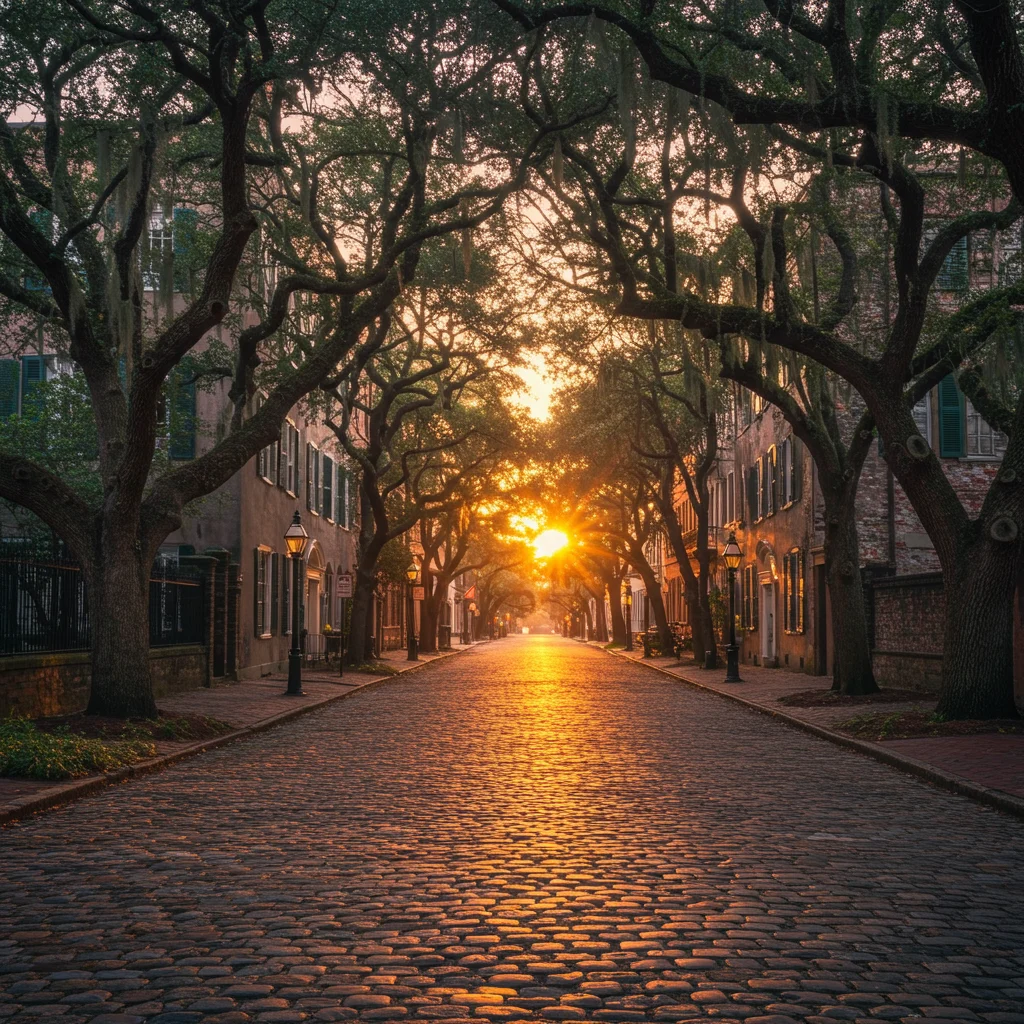
The architectural heritage here is not only a source of local pride but also a living record of the cultures, economies, and ambitions that shaped the region. Touring these cities offers us an opportunity to appreciate their unique beauty and understand the stories etched into every facade.
Why Explore Savannah and Charleston’s Architectural Heritage?
We find that exploring the architectural heritage of Savannah and Charleston offers more than visual pleasure. These cities invite us to experience history firsthand, tracing the evolution of American society through buildings that have withstood wars, fires, and changing times.
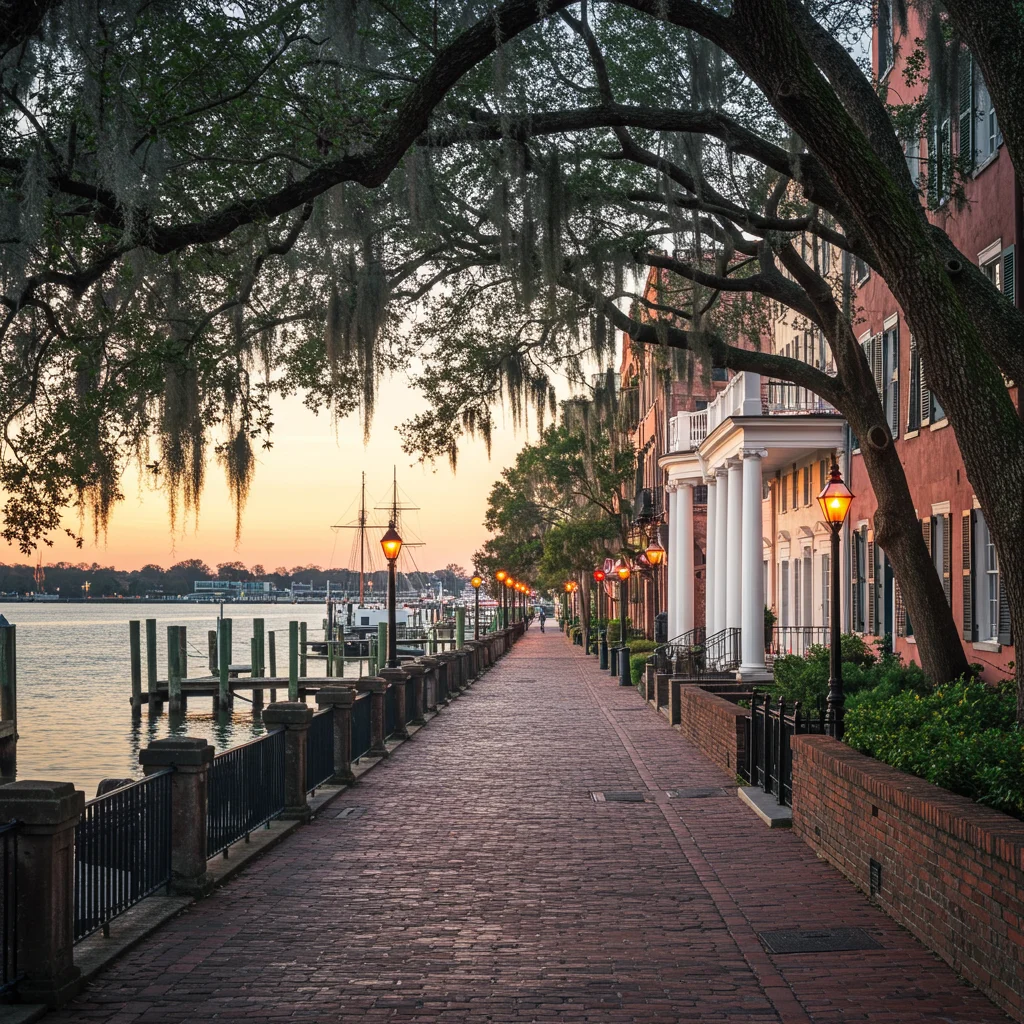
For architecture lovers and curious travelers alike, walking these streets is a chance to connect with craftsmanship, social history, and the enduring influence of design on daily life.
What Makes Savannah and Charleston Unique for Architecture Lovers?
Both Savannah and Charleston present an extraordinary variety of historic buildings in remarkably preserved urban settings. The grid of Savannah’s squares, shaded by ancient live oaks, contrasts with Charleston’s orderly streets lined with pastel facades and intricate ironwork.
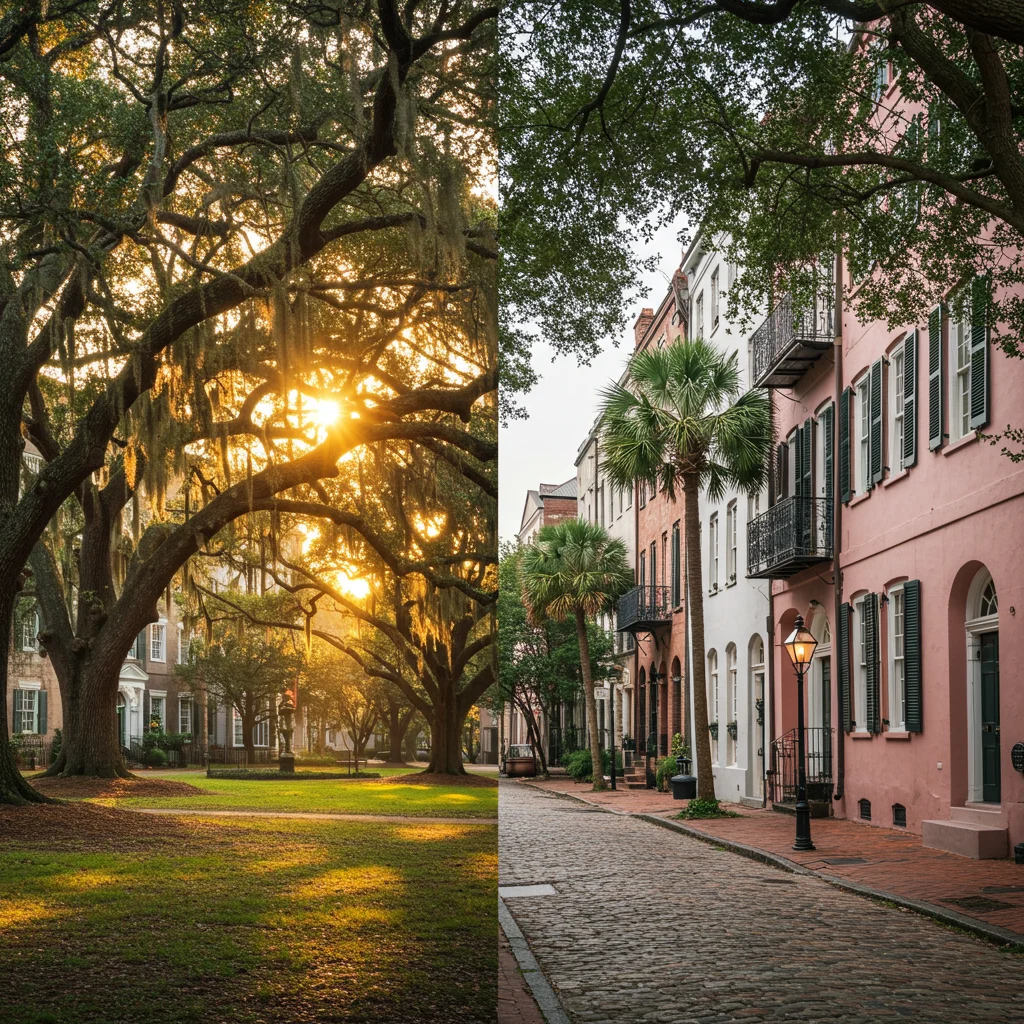
Distinctive traditions, such as Charleston’s “single house” design or Savannah’s planned public squares, set these destinations apart in the world of architectural tourism.
A Brief History of Savannah’s Architectural Evolution
Savannah’s story begins in 1733, when General James Oglethorpe established the city with a visionary grid plan. Over the centuries, Savannah’s architecture evolved in response to prosperity, war, and social change, resulting in a stunning blend of Colonial, Federal, Greek Revival, Gothic, and Victorian styles.
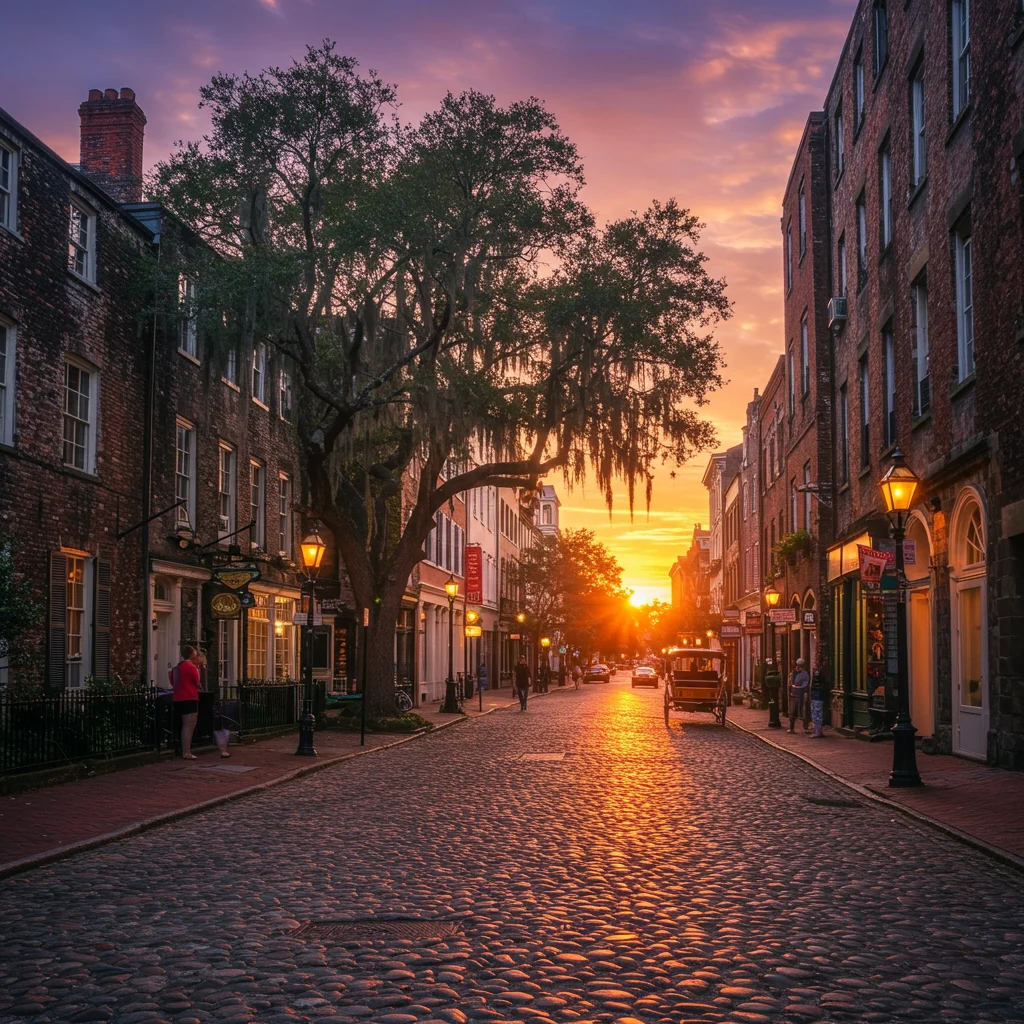
The city’s resilience is evident in how it adapted to new influences while preserving its historic core, making it a living museum of American architectural trends.
A Brief History of Charleston’s Architectural Heritage
Founded in 1670, Charleston’s growth as a port city attracted a diverse population and significant wealth. The result is a cityscape rich in Georgian, Federal, Greek Revival, and Italianate architecture, with homes and public buildings reflecting both European influences and local adaptations.
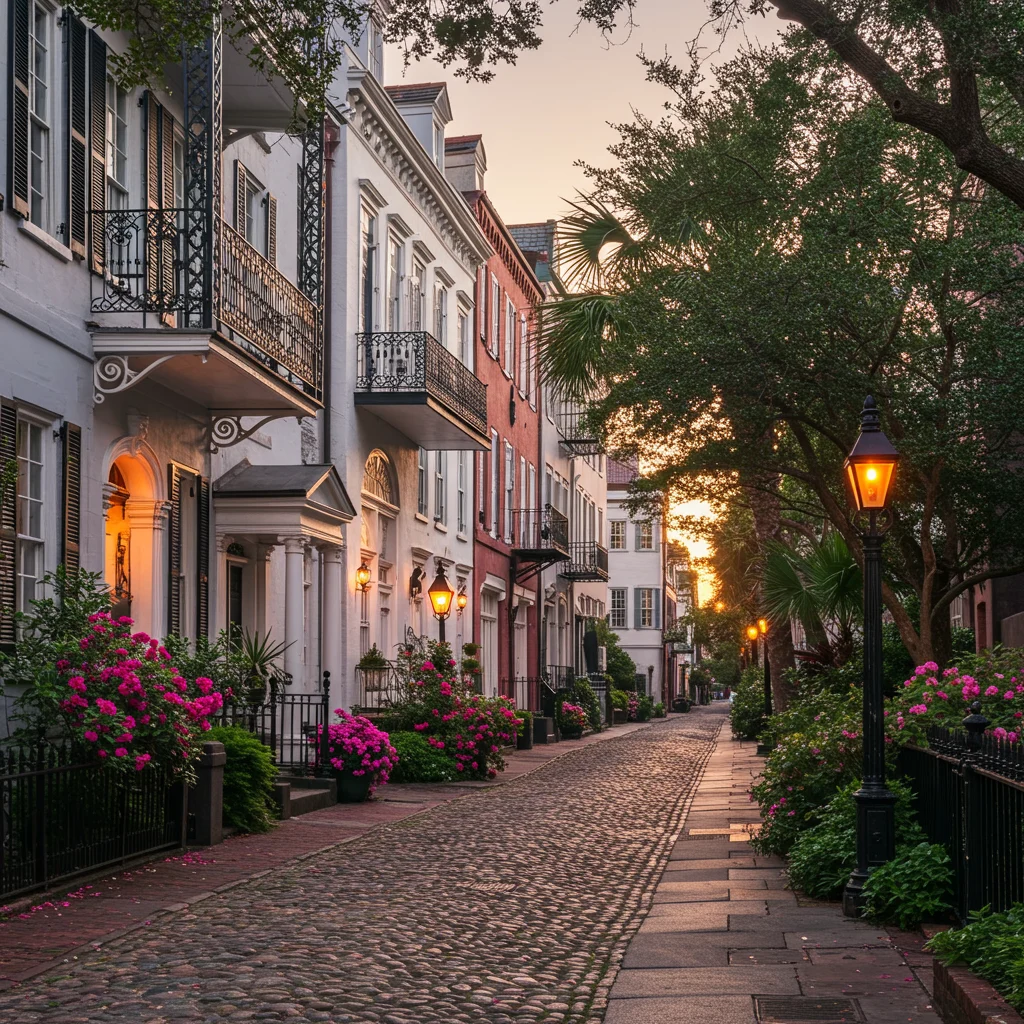
Charleston’s commitment to historic preservation is legendary, with many structures restored to their original splendor after fire, earthquake, and hurricane damage.
Types of Historical Architecture Found in Savannah
In Savannah, we encounter a wide array of architectural types, from grand townhouses to humble cottages. Key examples include:
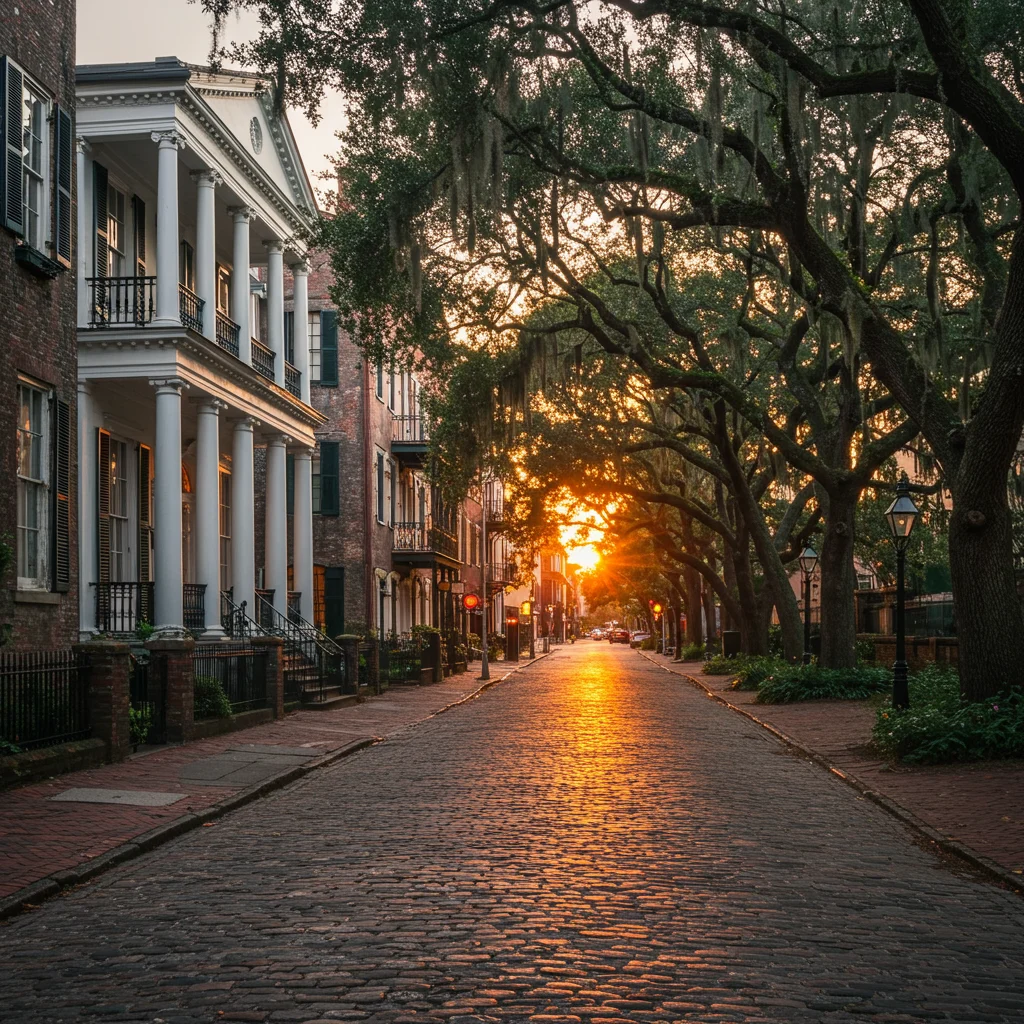
- Colonial-era buildings, such as the Pirates’ House
- Federal-style mansions along Bull Street
- Greek Revival homes with imposing columns
- Victorian row houses on Jones Street
- Gothic Revival churches and civic buildings
Each neighborhood reveals a different aspect of Savannah’s evolving identity, shaped by prosperity, disaster, and recovery.
Types of Historical Architecture Found in Charleston
Charleston’s architectural landscape is equally diverse. Notable building types include:
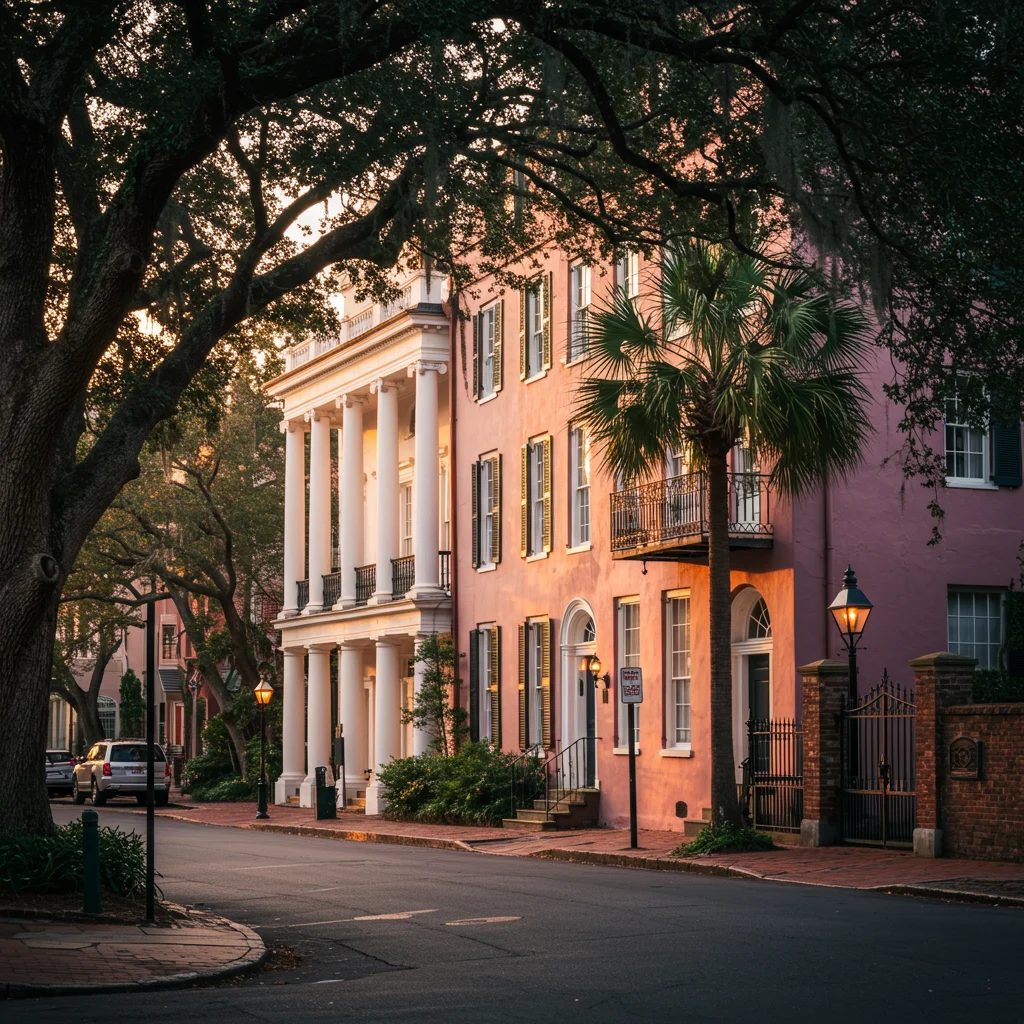
- Single houses with side piazzas
- Federal and Georgian mansions on the Battery
- Italianate commercial buildings along King Street
- Historic churches with soaring steeples
- Colonial-era taverns and meeting halls
These structures reflect the city’s mercantile roots, cosmopolitan influences, and enduring social traditions.
Popular Architectural Styles in Savannah
Savannah is renowned for its harmonious blend of architectural styles. Among the most celebrated are:
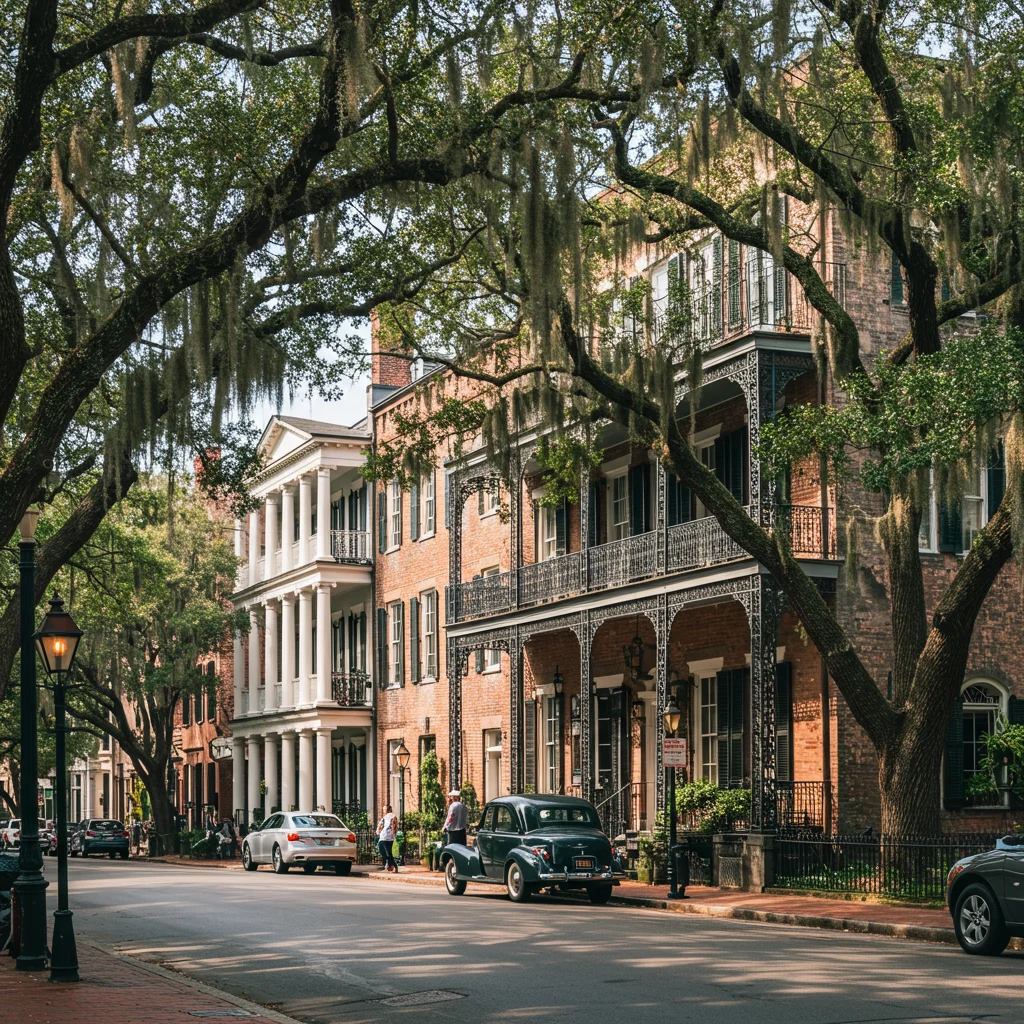
- Federal style, noted for its symmetry and elegance
- Greek Revival, featuring grand columns and porticos
- Gothic Revival, with pointed arches and intricate tracery
- Victorian, distinguished by ornate trim and vibrant colors
The variety of styles creates a sense of discovery as we move from square to square, each block unveiling new visual delights.
Popular Architectural Styles in Charleston
In Charleston, we see a concentration of Georgian, Federal, Greek Revival, and Italianate styles. These are characterized by:
- Georgian symmetry and classical proportions
- Federal delicacy in ironwork and fanlights
- Greek Revival columns and entablatures
- Italianate brackets and tall, narrow windows
The city’s historic core is a showcase of the architectural tastes that flourished during Charleston’s golden age.
Comparing Savannah and Charleston: Architectural Differences and Similarities
While both cities share a commitment to preservation and a wealth of historic buildings, their architectural character reveals key differences. Savannah’s city plan, with its grid of public squares, creates a sense of openness, while Charleston’s narrow streets and hidden gardens foster intimacy.
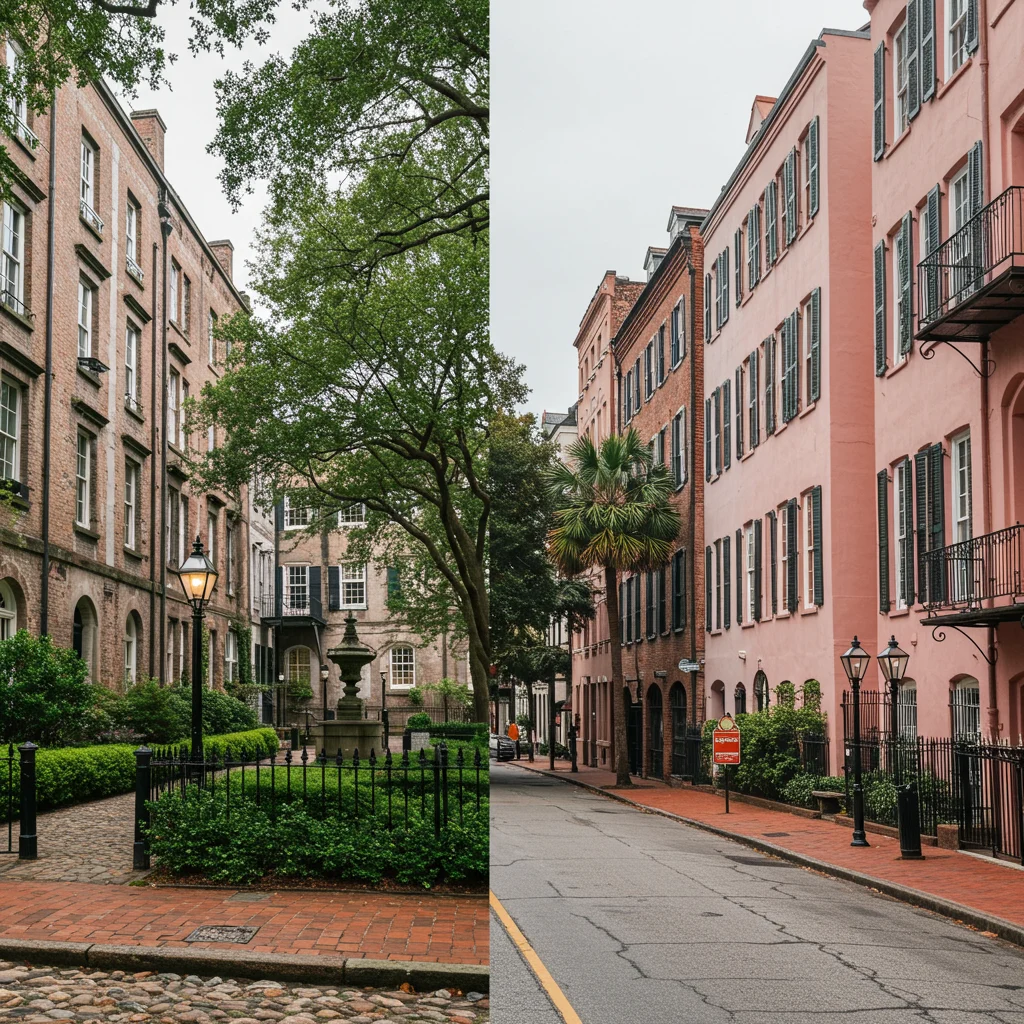
Similarities include the use of pastel colors, ornamental ironwork, and a mix of domestic and civic architecture that reflects both aspiration and tradition.
Planning Your Historical Architecture Tour: Essential Tips
We recommend preparing thoughtfully to maximize your architecture tour experience. Consider these essential tips:
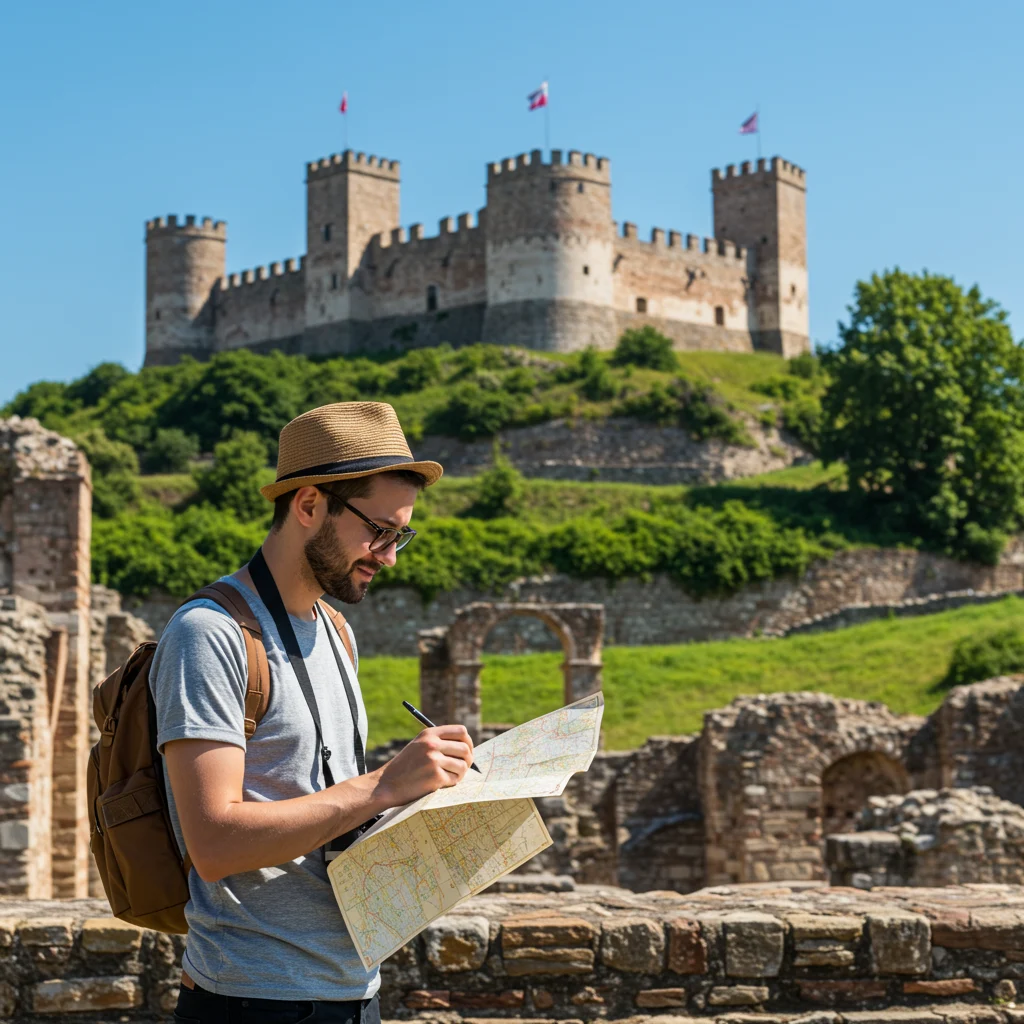
- Wear comfortable shoes for walking on cobblestones and uneven streets.
- Bring a camera or smartphone to capture architectural details.
- Check tour schedules in advance and book early during peak seasons.
- Carry water and sun protection, especially in the summer months.
- Read up on local history to enhance your appreciation of each site.
For those interested in how architecture tours compare internationally, you might appreciate our account of Renaissance and Medici tales in Florence.
Best Times of Year for Architecture Tours in Savannah and Charleston
The ideal seasons for architecture tours are spring and fall, when temperatures are mild and gardens overflow with blooms. Azaleas, magnolias, and camellias add color and fragrance, enhancing the visual impact of historic neighborhoods.
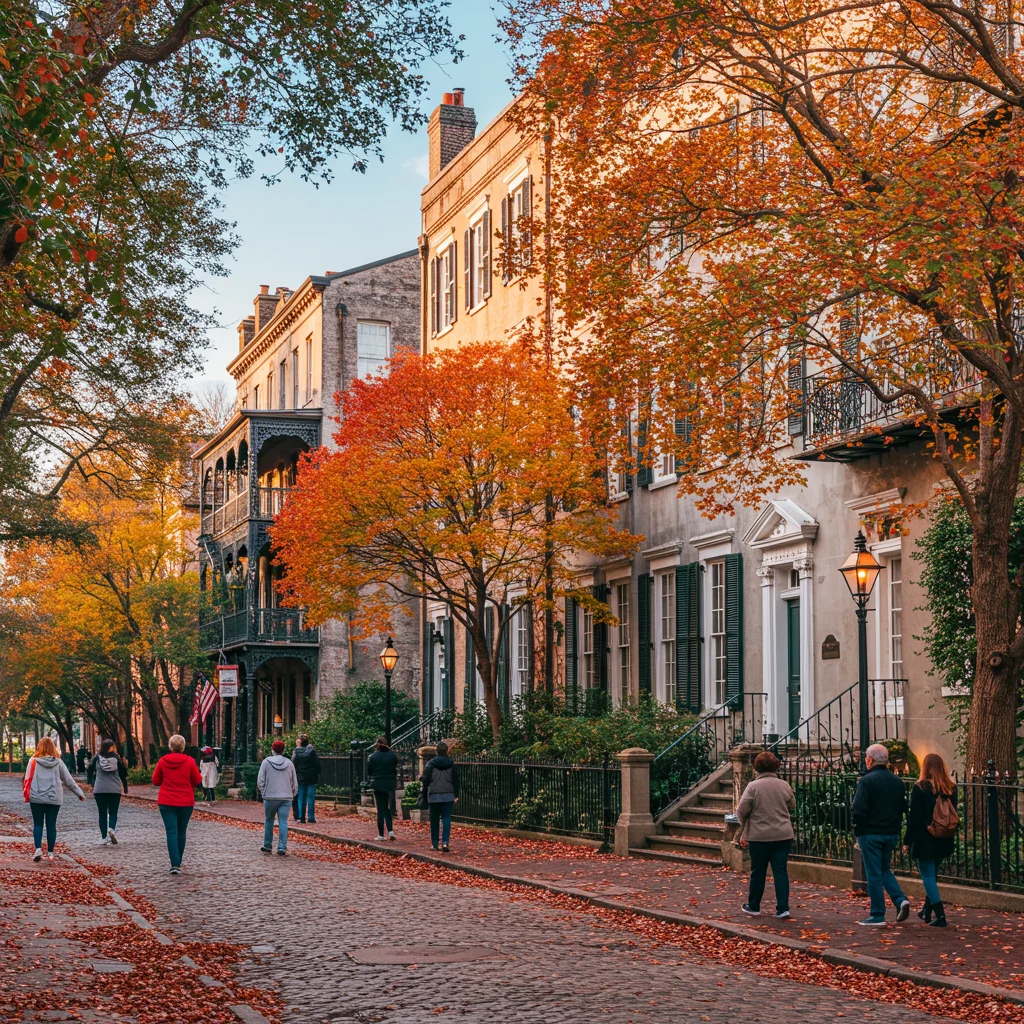
Summer brings heat and humidity, while winter offers quieter streets and festive decorations. Each season provides its own charm and photographic opportunities.
How to Choose the Right Architecture Tour for You
Selecting the right architecture tour depends on your interests, mobility, and schedule. Some tours focus on specific styles or neighborhoods, while others offer broader overviews or delve into the lives of notable residents.

Consider whether you prefer a walking, trolley, or carriage tour, and whether you wish to explore interiors or focus on exterior views.
Self-Guided vs. Guided Tours: Which Is Better?
Both self-guided and guided tours have unique advantages. Guided tours provide expert commentary and access to private sites, while self-guided routes allow for flexibility and a personalized pace.
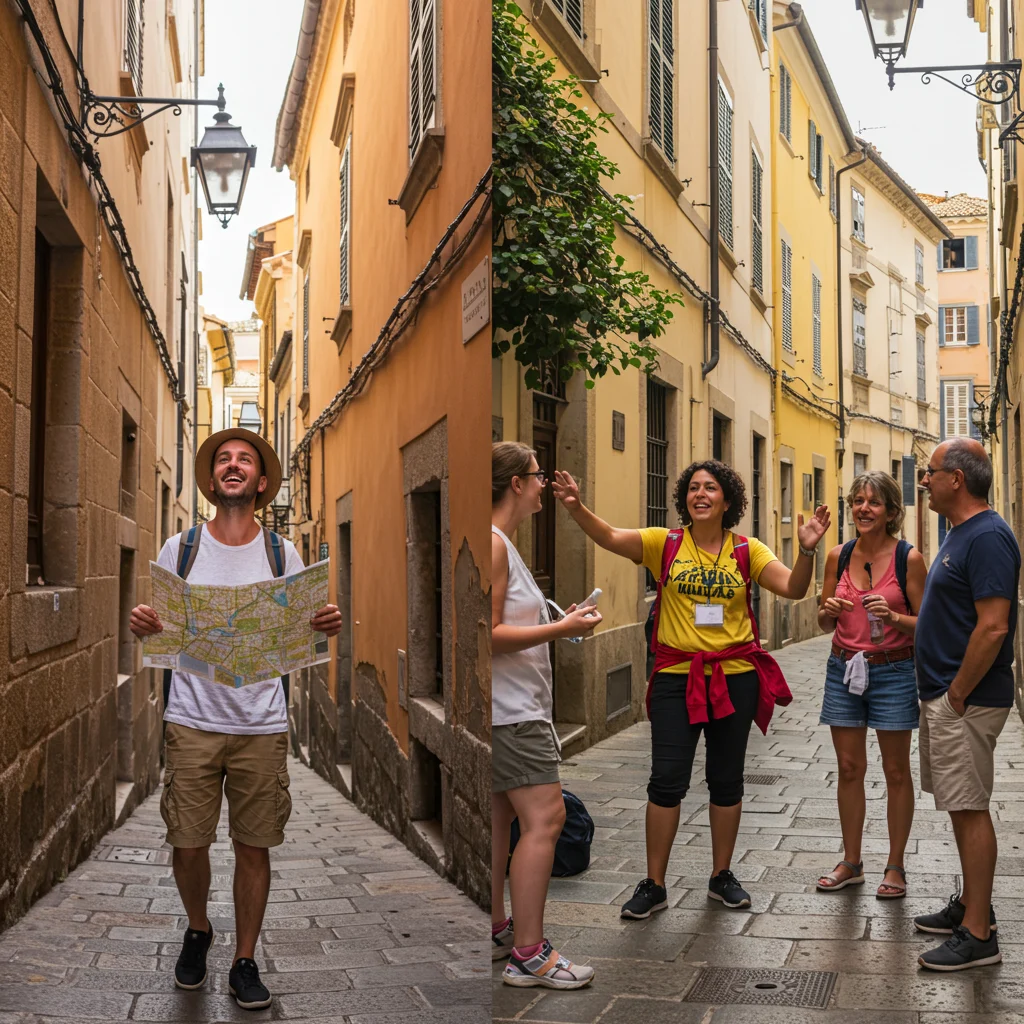
We find that combining both approaches can yield a deeper and more memorable experience.
Top-Rated Guided Architecture Tours in Savannah
Savannah offers several top-rated guided tours led by knowledgeable historians and local enthusiasts. These tours often visit highlights such as the Mercer-Williams House, Owens-Thomas House, and the city’s famed squares.
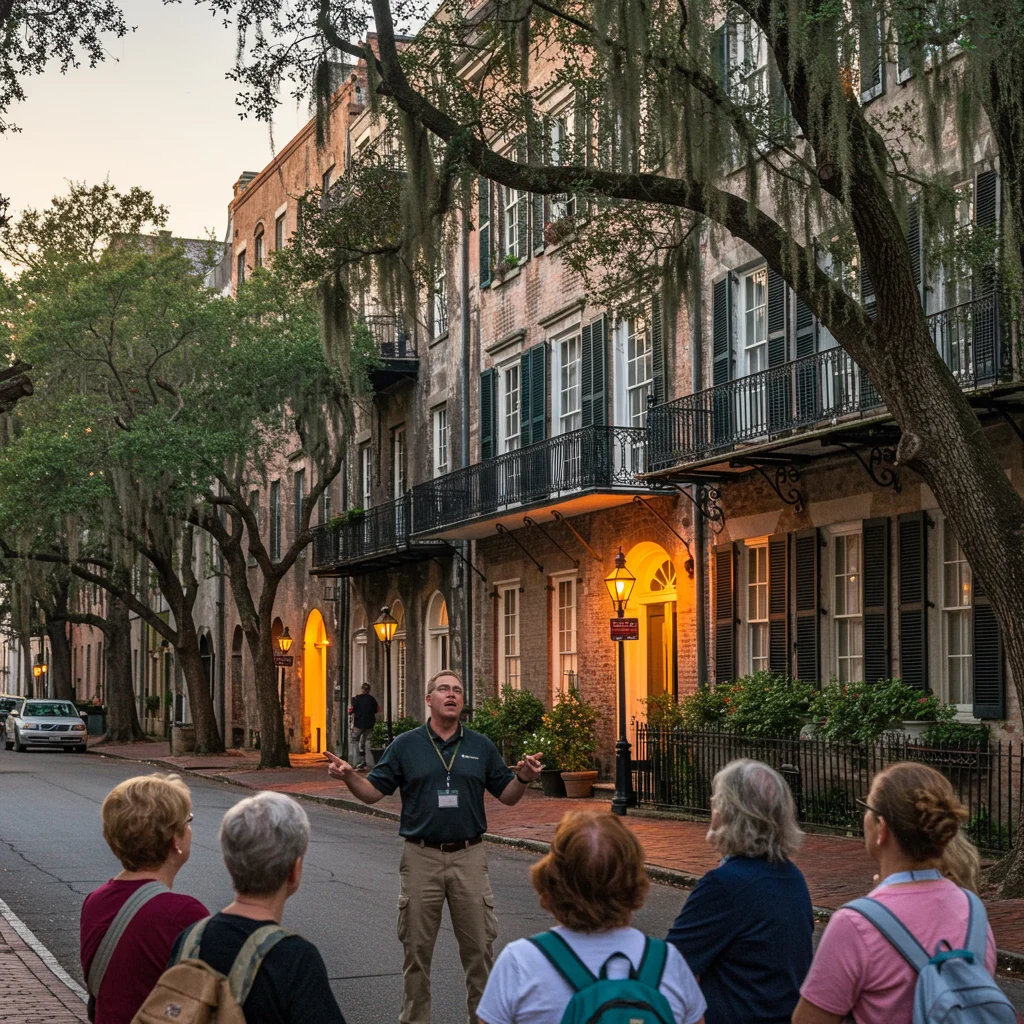
Many guides share compelling stories that bring the buildings to life, revealing secrets and anecdotes not found in guidebooks.
Top-Rated Guided Architecture Tours in Charleston
Charleston’s guided architecture tours showcase the city’s best-preserved mansions, gardens, and churches. Experienced guides explain the significance of the Charleston single house, the importance of the port, and the artistry of local ironwork.
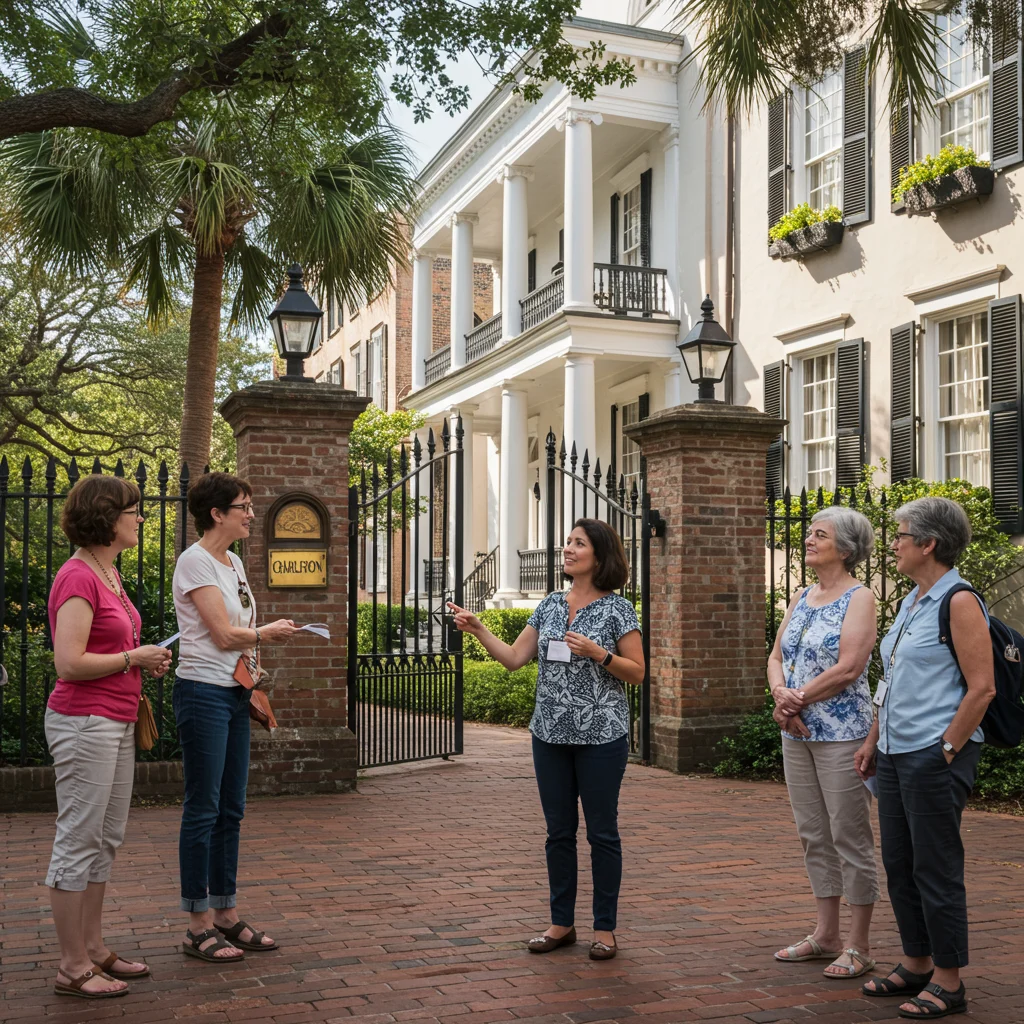
Some tours also incorporate culinary or garden elements for a richer understanding of local culture.
Savannah’s Historic District: A Walking Tour Overview
Exploring Savannah’s Historic District on foot allows us to appreciate the city’s unique urban design. Each of the 22 squares offers a different atmosphere, framed by historic homes, live oaks, and flowering shrubs.
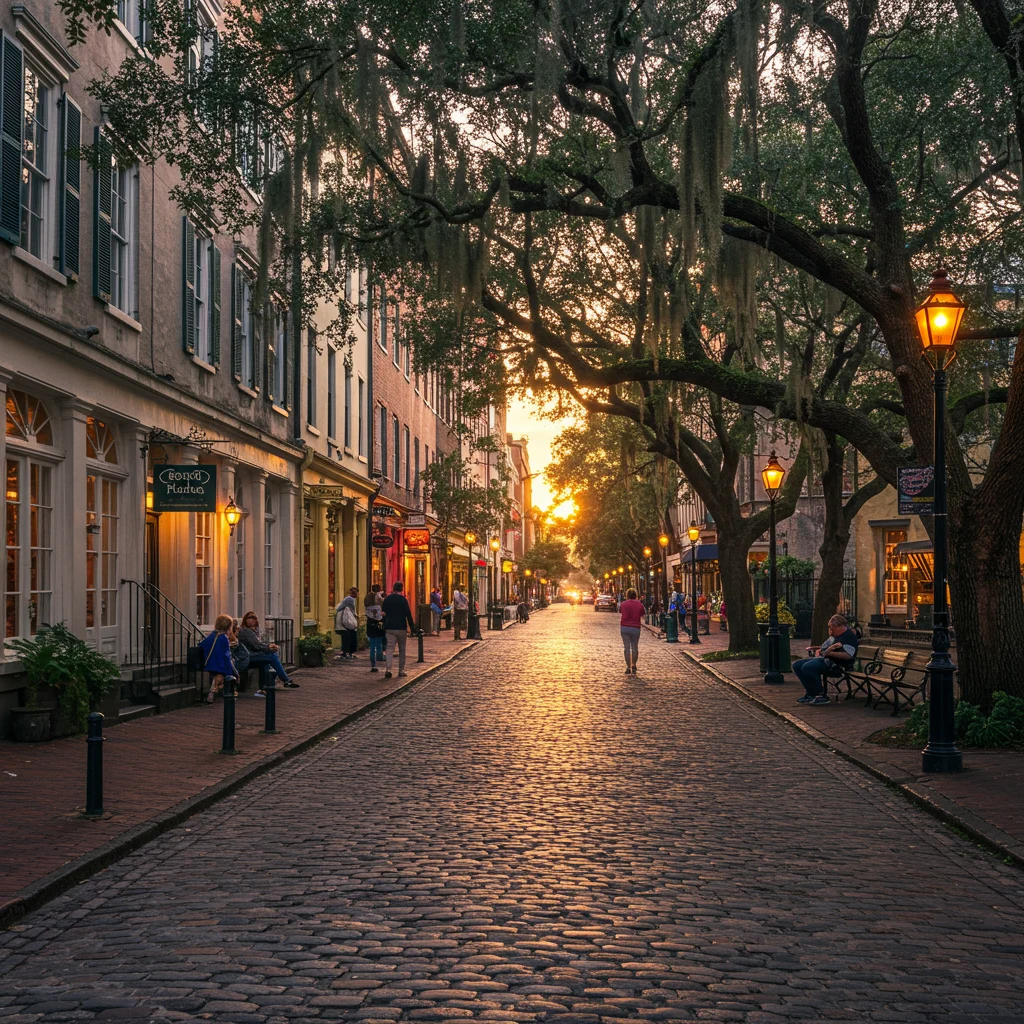
The district’s pedestrian-friendly layout makes it easy to move from one architectural gem to the next, with surprises around every corner.
Charleston’s Historic District: A Walking Tour Overview
Charleston’s Historic District features cobblestone streets, hidden courtyards, and colorful houses that reward those who explore on foot. Walking tours reveal layers of history, from Colonial-era taverns to stately mansions along the Battery.
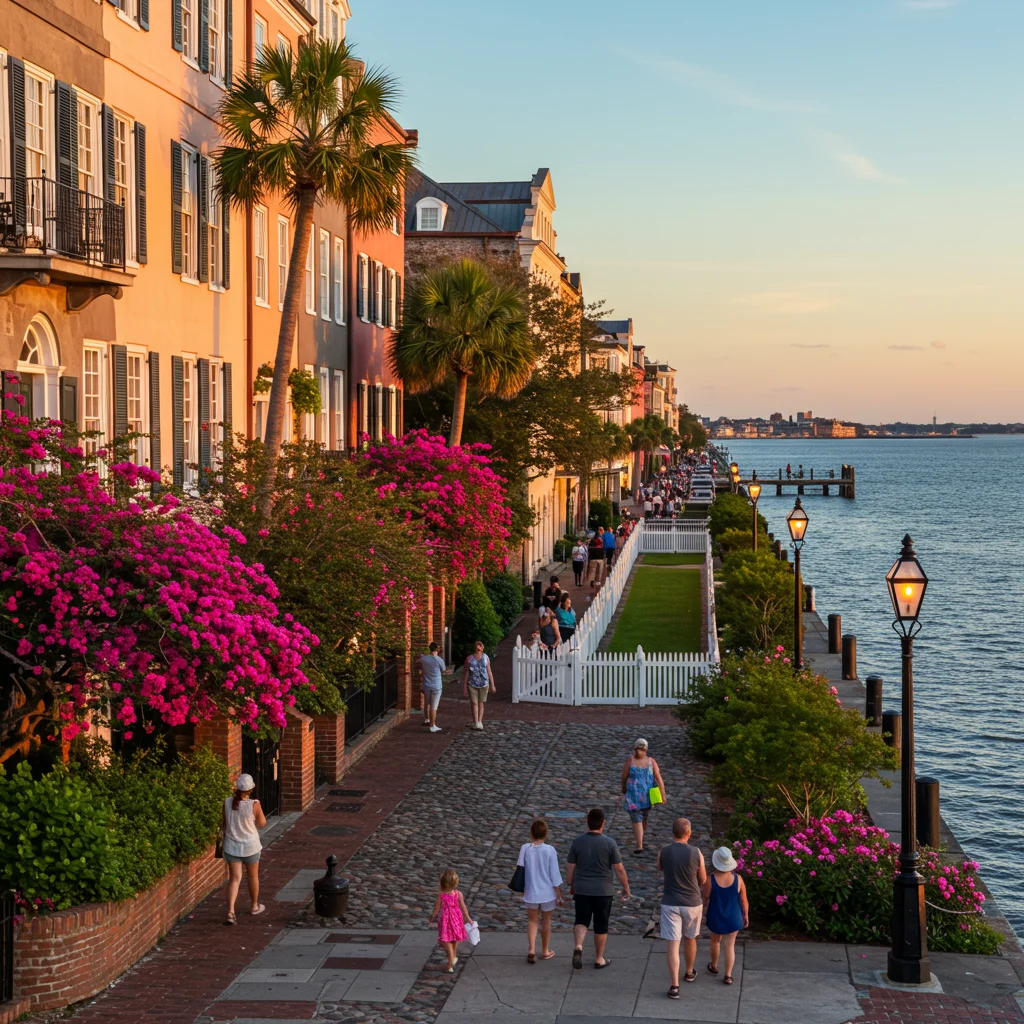
Street musicians, horse-drawn carriages, and the scent of jasmine contribute to a sensory-rich experience.
Must-See Historic Buildings in Savannah
Some of Savannah’s most iconic historic buildings include:
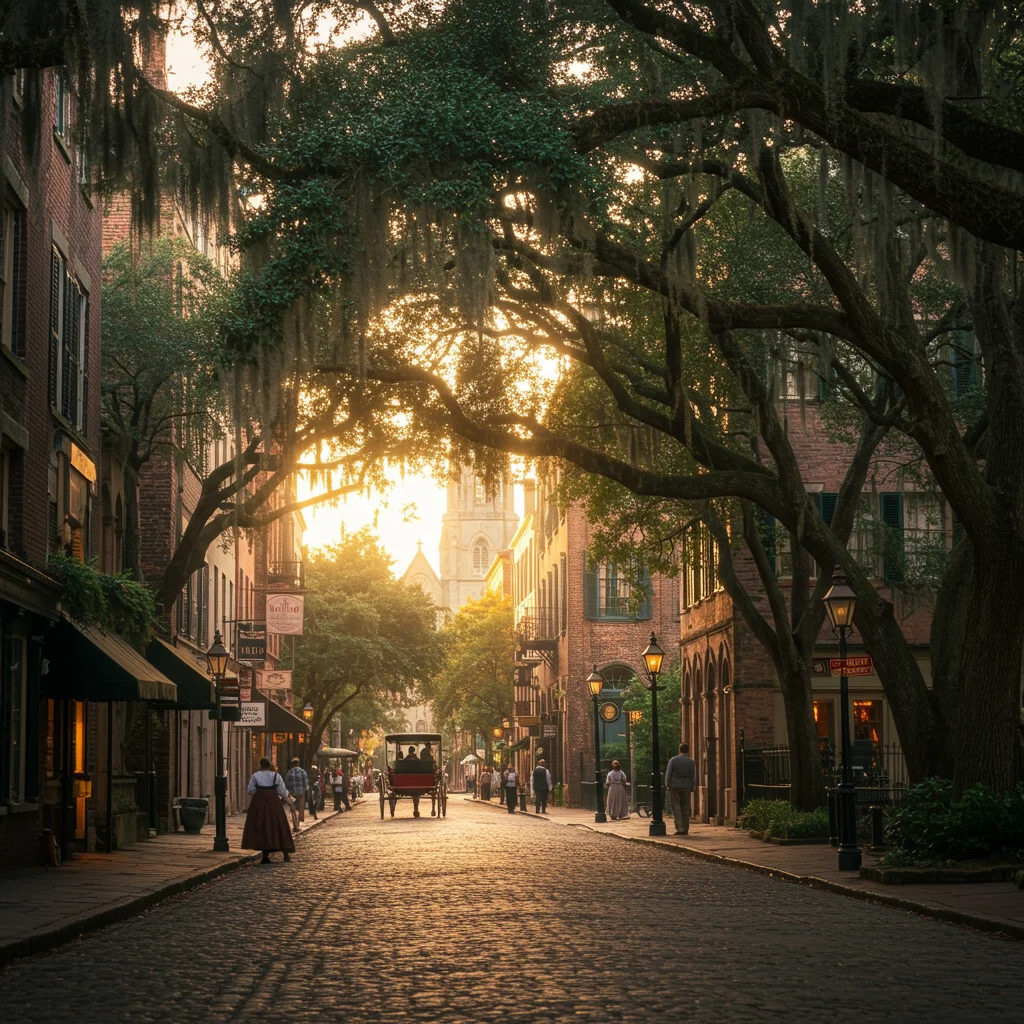
- Owens-Thomas House: A masterpiece of English Regency architecture
- Mercer-Williams House: Famous for its role in “Midnight in the Garden of Good and Evil”
- Cathedral of St. John the Baptist: A soaring example of Gothic Revival
- Juliette Gordon Low Birthplace: Home of the Girl Scouts’ founder
Each building tells a unique story, reflecting the city’s diverse heritage and artistic ambition.
Must-See Historic Buildings in Charleston
Charleston’s must-see buildings include:
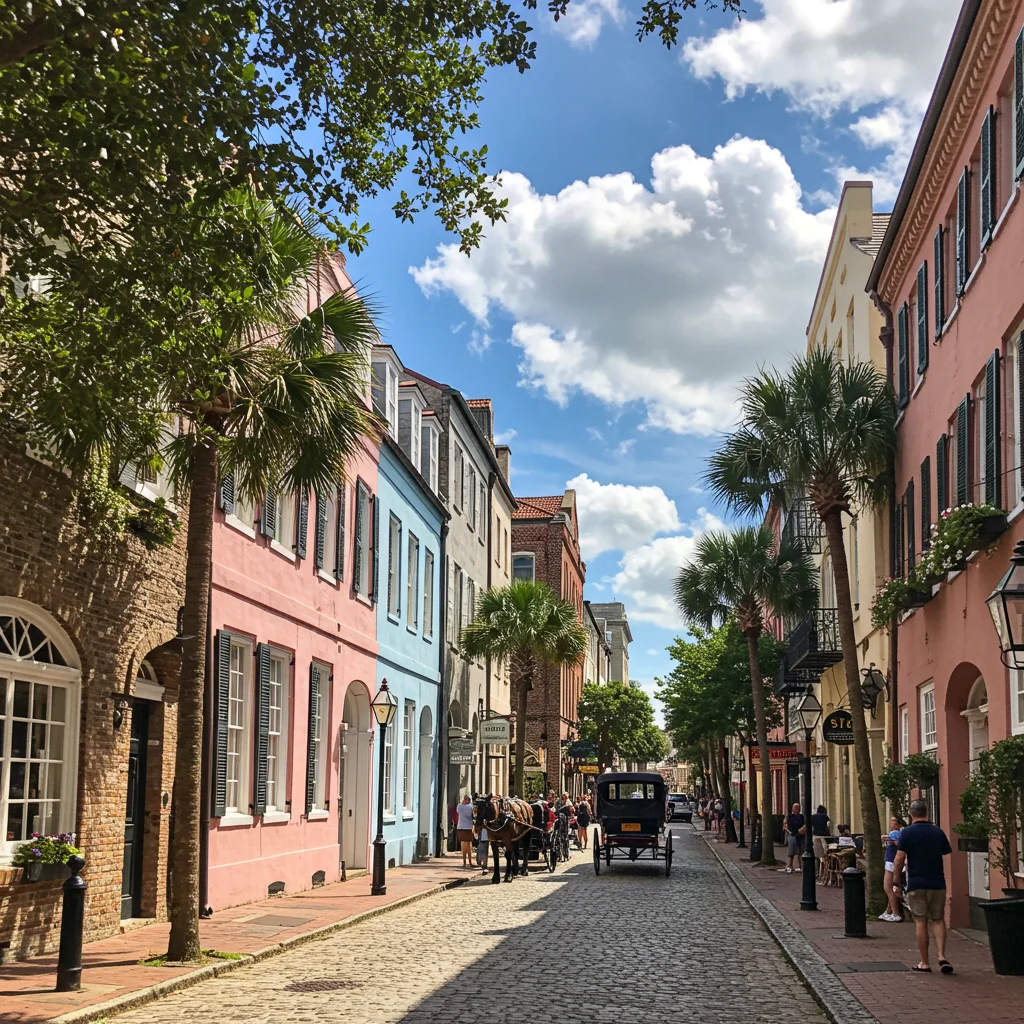
- Nathaniel Russell House: Known for its free-flying spiral staircase
- Aiken-Rhett House: A remarkably preserved urban plantation
- St. Michael’s Church: The city’s oldest religious structure
- Rainbow Row: Iconic pastel townhouses along East Bay Street
These landmarks embody Charleston’s rich social, religious, and economic history.
Exploring Savannah’s Squares: Architectural Highlights
Savannah’s 22 public squares are a defining feature, each surrounded by stately homes and lush greenery. Chippewa Square, for example, is famed for its role in film, while Monterey Square boasts some of the city’s most impressive mansions.
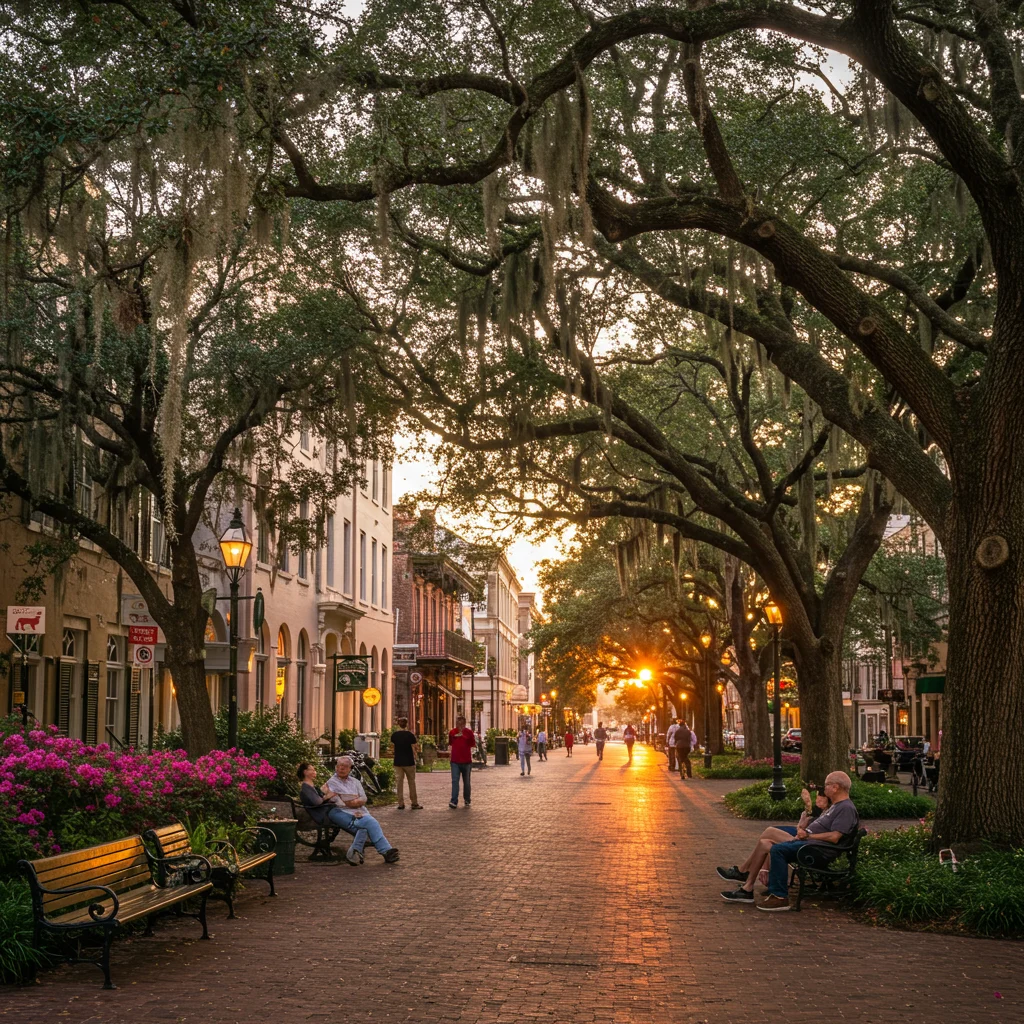
Benches shaded by ancient oaks offer a peaceful vantage point for admiring the interplay of architecture and landscape.
The Role of Garden Design in Savannah’s Architecture
Gardens are integral to Savannah’s architectural identity. Courtyards, wrought-iron gates, and boxwood parterres soften the lines of brick and stucco, creating intimate spaces for reflection and socializing.
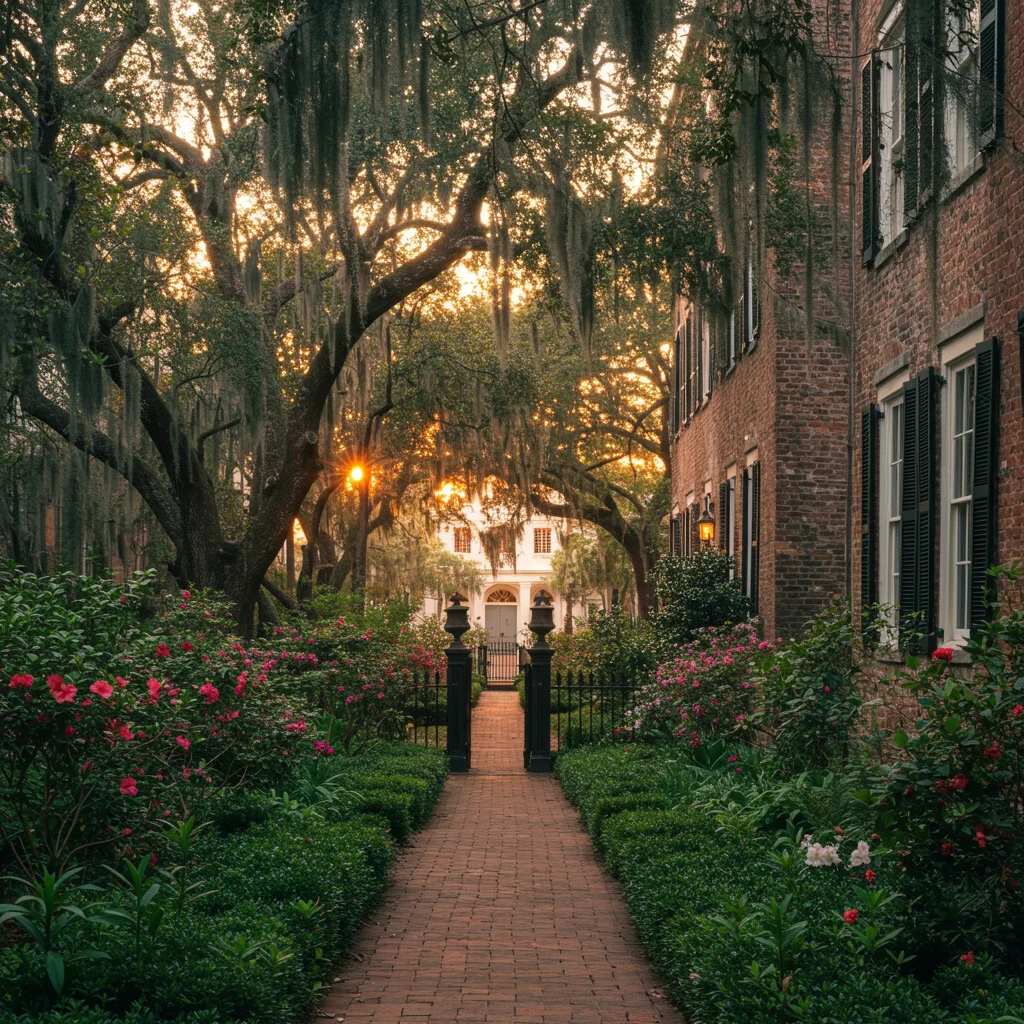
The scent of magnolia and jasmine drifts through the air, enhancing the beauty of both private homes and public squares.
Antebellum Architecture: Where to See It in Savannah
Savannah’s antebellum architecture—built before the Civil War—can be admired along Jones Street, in the Greek Revival mansions of the Historic District, and at nearby plantations.
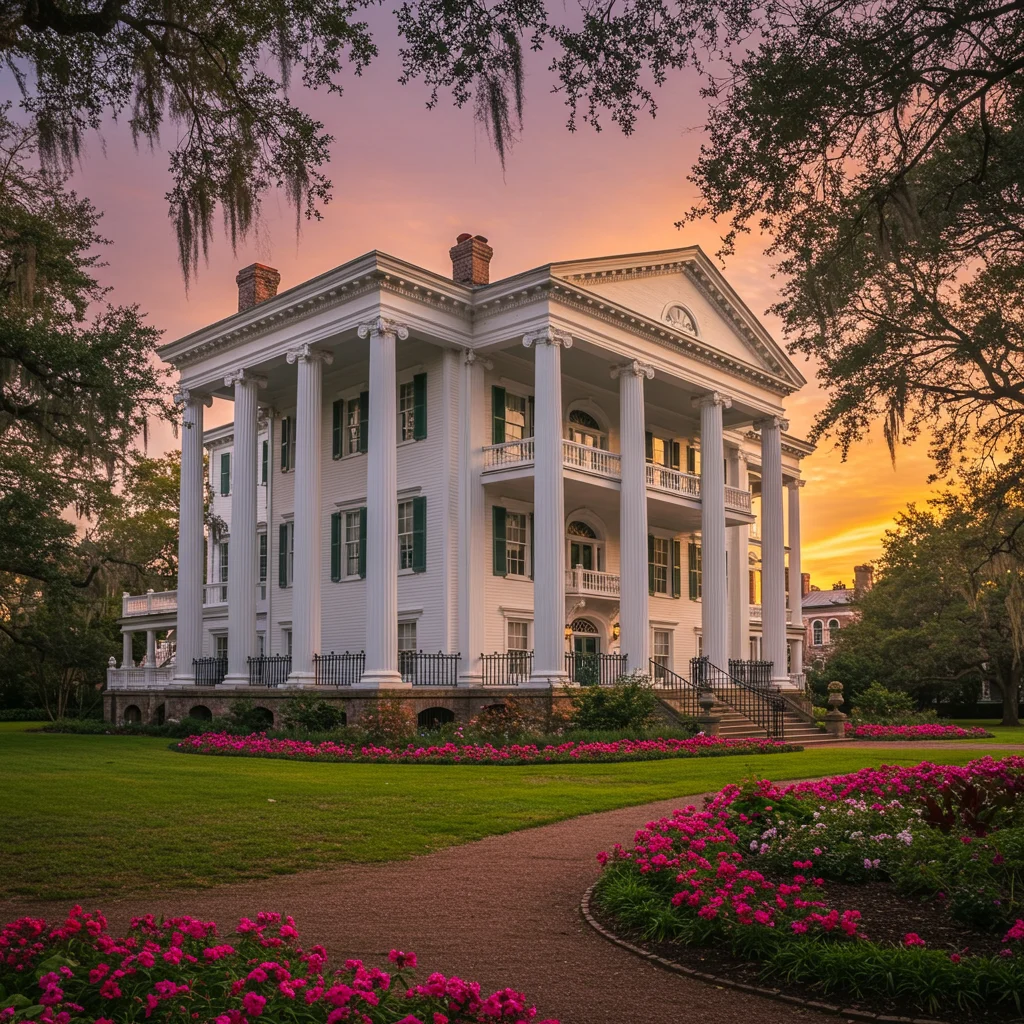
These buildings stand as testaments to the city’s prosperity and artistic ambition during the early to mid-19th century.
Antebellum Architecture: Where to See It in Charleston
Charleston’s antebellum homes are concentrated along the Battery and South of Broad neighborhoods. Their grand columns, wide piazzas, and lush gardens reflect the city’s affluence and cosmopolitan influences in the years leading up to the Civil War.
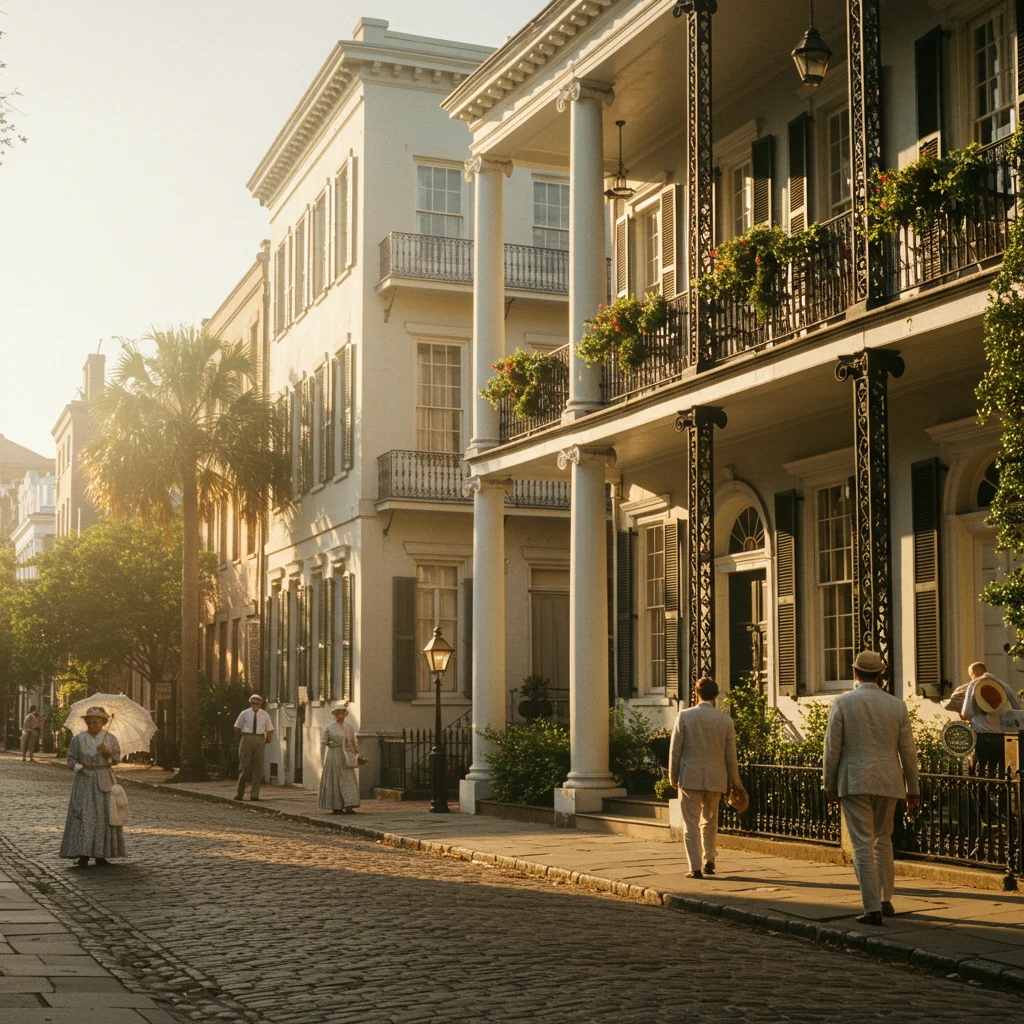
Some homes are open for tours, offering a glimpse into historic interiors and family histories.
Victorian Era Architecture in Savannah: Key Examples
Savannah’s Victorian District showcases ornate townhouses with decorative trim, stained glass, and steep gables. Jones Street, often cited as one of America’s most beautiful streets, is lined with these colorful homes.
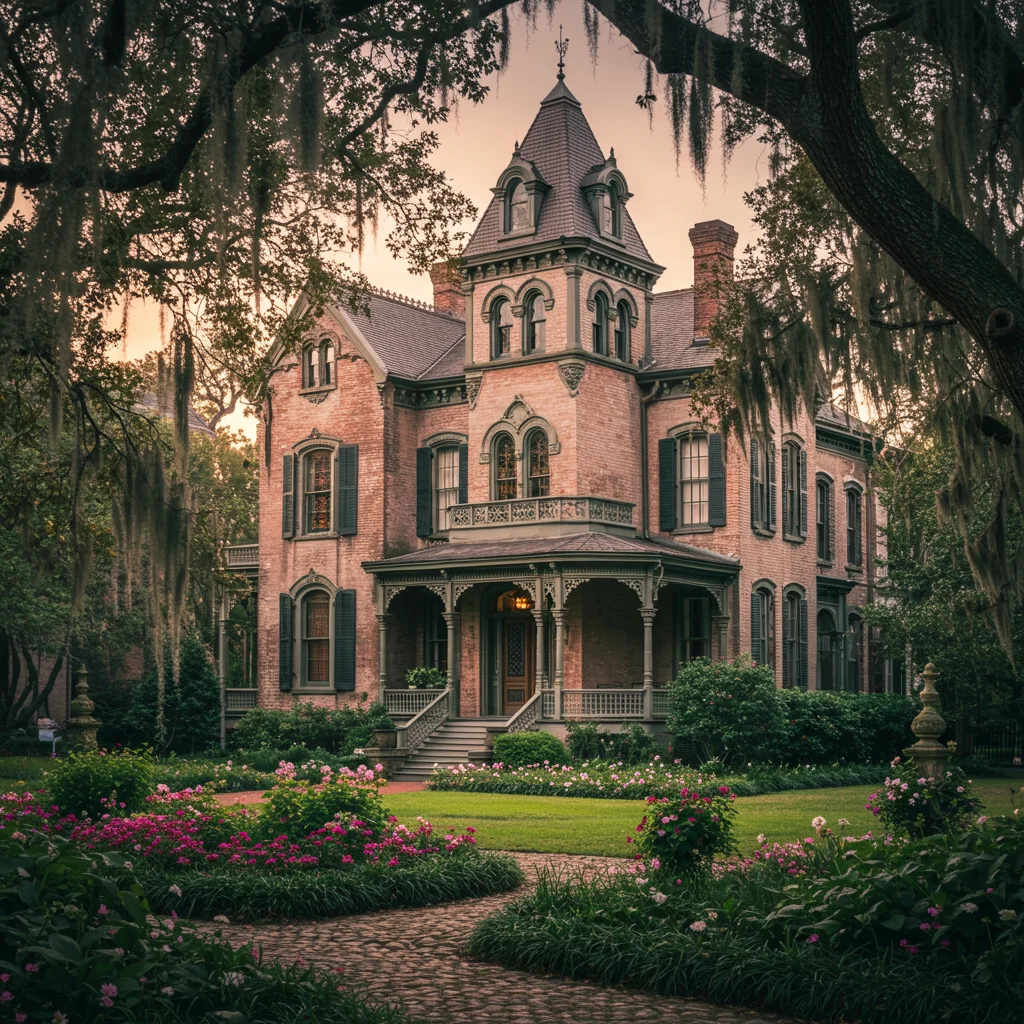
Walking here feels like stepping into a living postcard, with sunlight filtering through Spanish moss and casting dappled shadows on painted porches.
Georgian and Federal Styles in Charleston: Notable Structures
Charleston’s Georgian and Federal buildings define the city’s historic heart. The Heyward-Washington House and the Miles Brewton House are exemplary, featuring symmetry, classical proportions, and refined ornamentation.
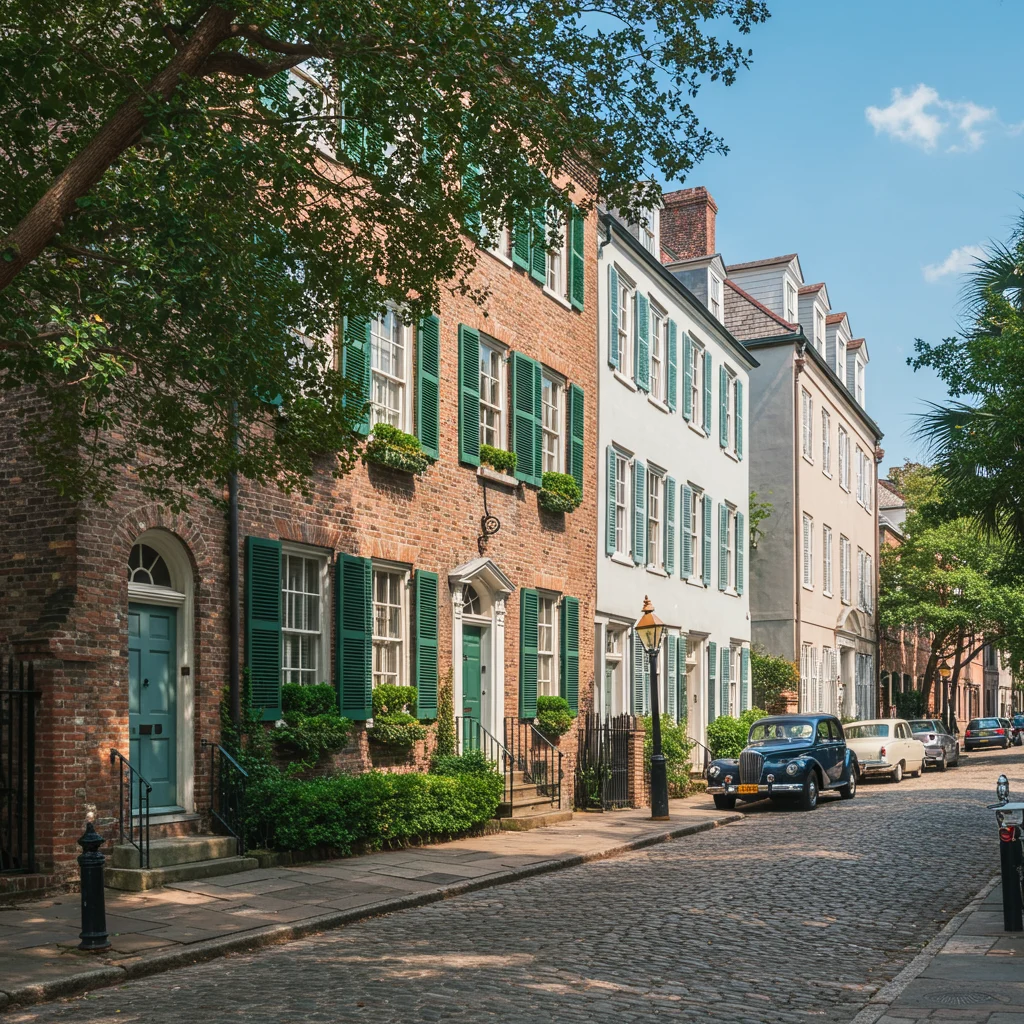
These homes often include grand entryways and formal gardens, highlighting the social aspirations of Charleston’s early elite.
What Is a Charleston Single House?
The Charleston single house is a uniquely local design, characterized by a narrow facade facing the street and a long side piazza. This layout maximizes airflow and privacy, responding ingeniously to the city’s subtropical climate.
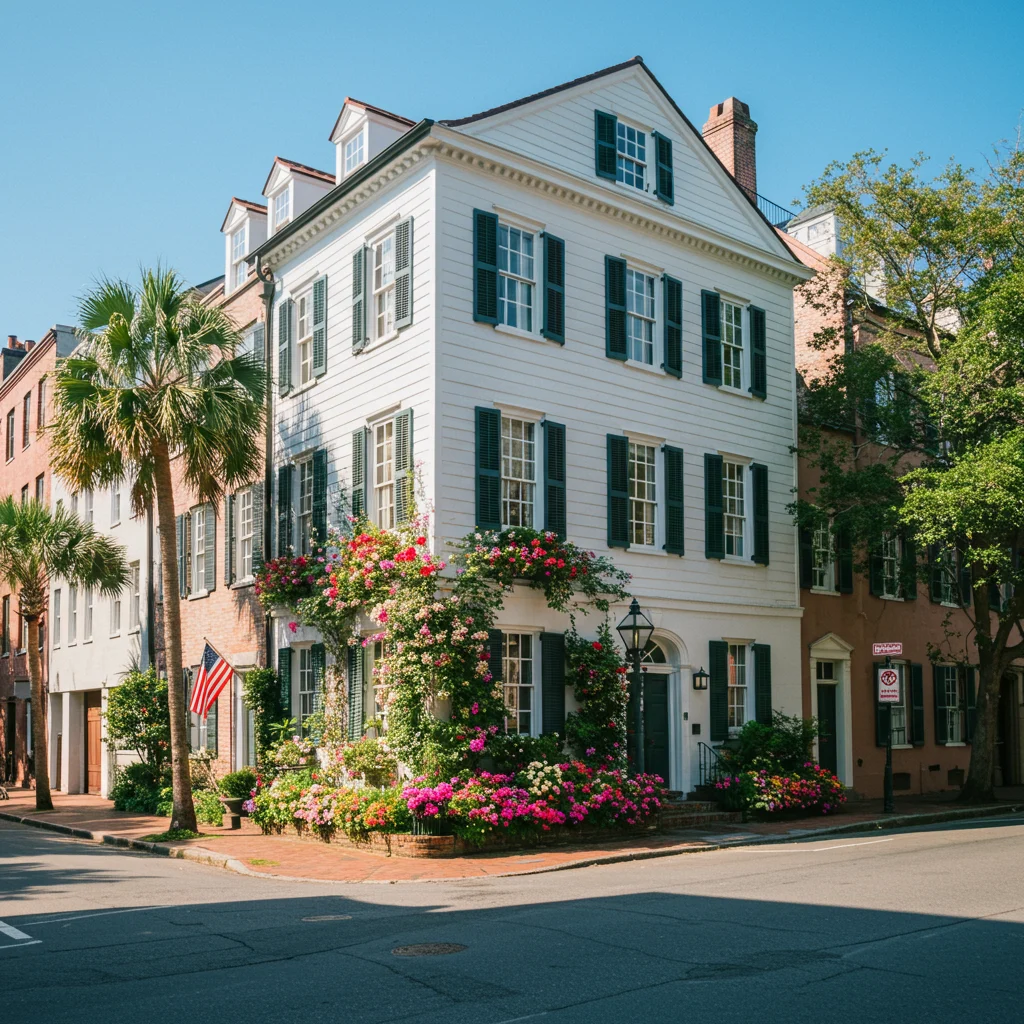
Single houses often feature ornate doors, gas lanterns, and lush gardens hidden from view, inviting curiosity and admiration.
Exploring the Rainbow Row: Charleston’s Iconic Facades
Rainbow Row is a beloved stretch of pastel-colored townhouses along East Bay Street. These 18th-century buildings were restored in the 20th century and now stand as symbols of Charleston’s enduring charm.
![]()
The vivid hues, flower boxes, and elegant shutters make Rainbow Row one of the most photographed sites in the city.
Savannah’s Historic Churches: Architectural Marvels
Savannah’s historic churches are architectural masterpieces, blending spiritual and artistic inspiration. The Cathedral of St. John the Baptist, with its twin spires and luminous stained glass, is a must-see.
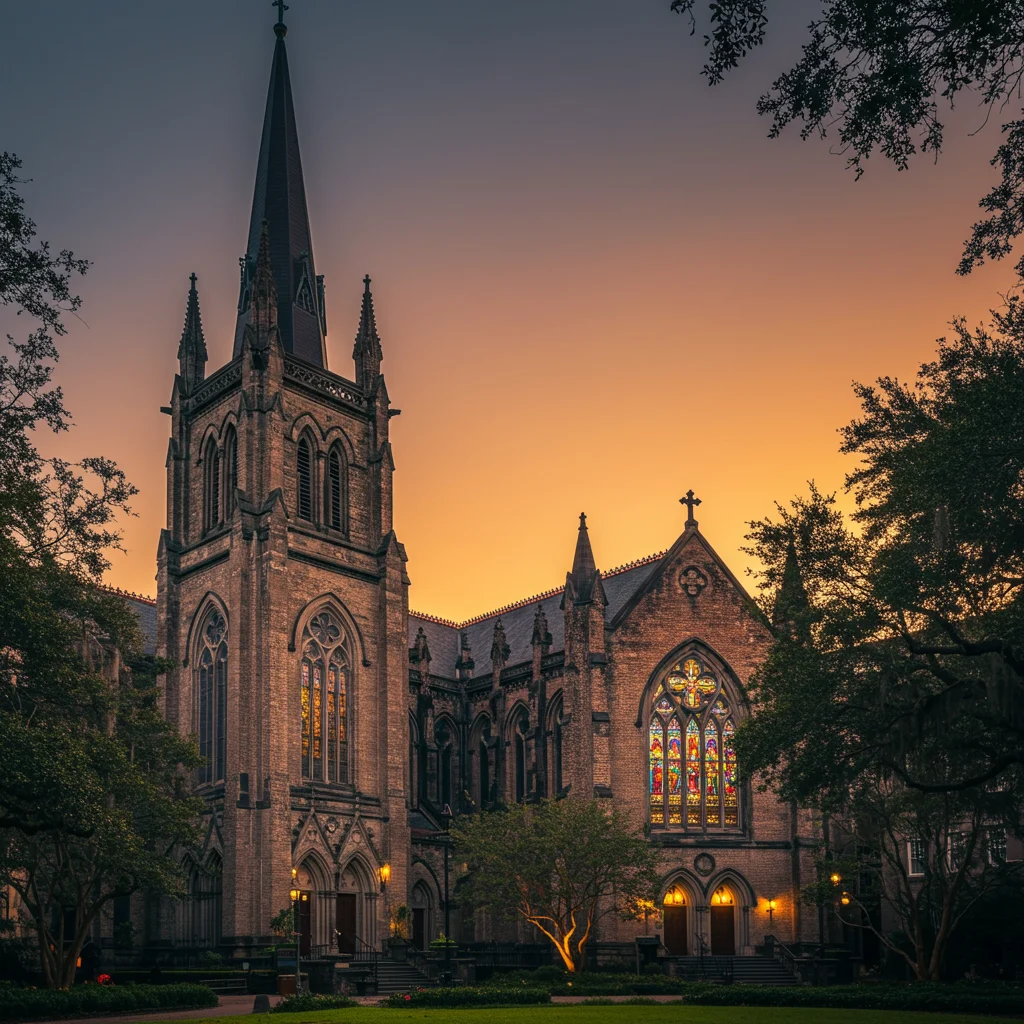
Other notable examples include the First African Baptist Church and Christ Church, each reflecting different periods and traditions.
For those interested in the role of sacred spaces in history, we discuss similar themes in our exploration of La Catedral.
Charleston’s Historic Churches: Architectural Marvels
Charleston’s churches are central to its skyline and history. St. Michael’s Church, with its gleaming white steeple, has witnessed centuries of civic life. St. Philip’s Church and the French Huguenot Church are also renowned for their beauty and significance.
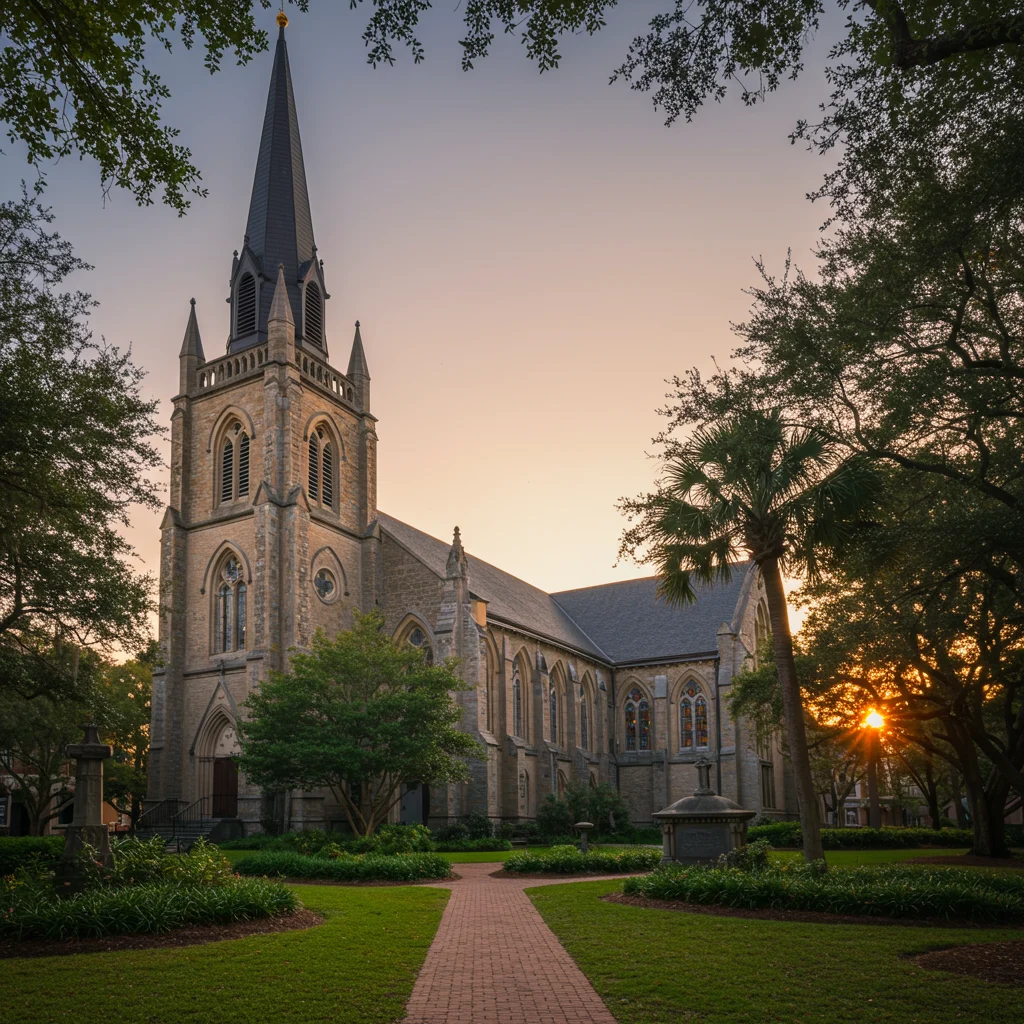
The sound of bells and the play of light through stained glass create an atmosphere of reverence and awe.
Famous Architects Who Shaped Savannah and Charleston
Both cities owe much to visionary architects such as William Jay (Owens-Thomas House) and Robert Mills (Fireproof Building in Charleston). Their designs combined international trends with local materials and needs, leaving an indelible mark on the cityscapes.
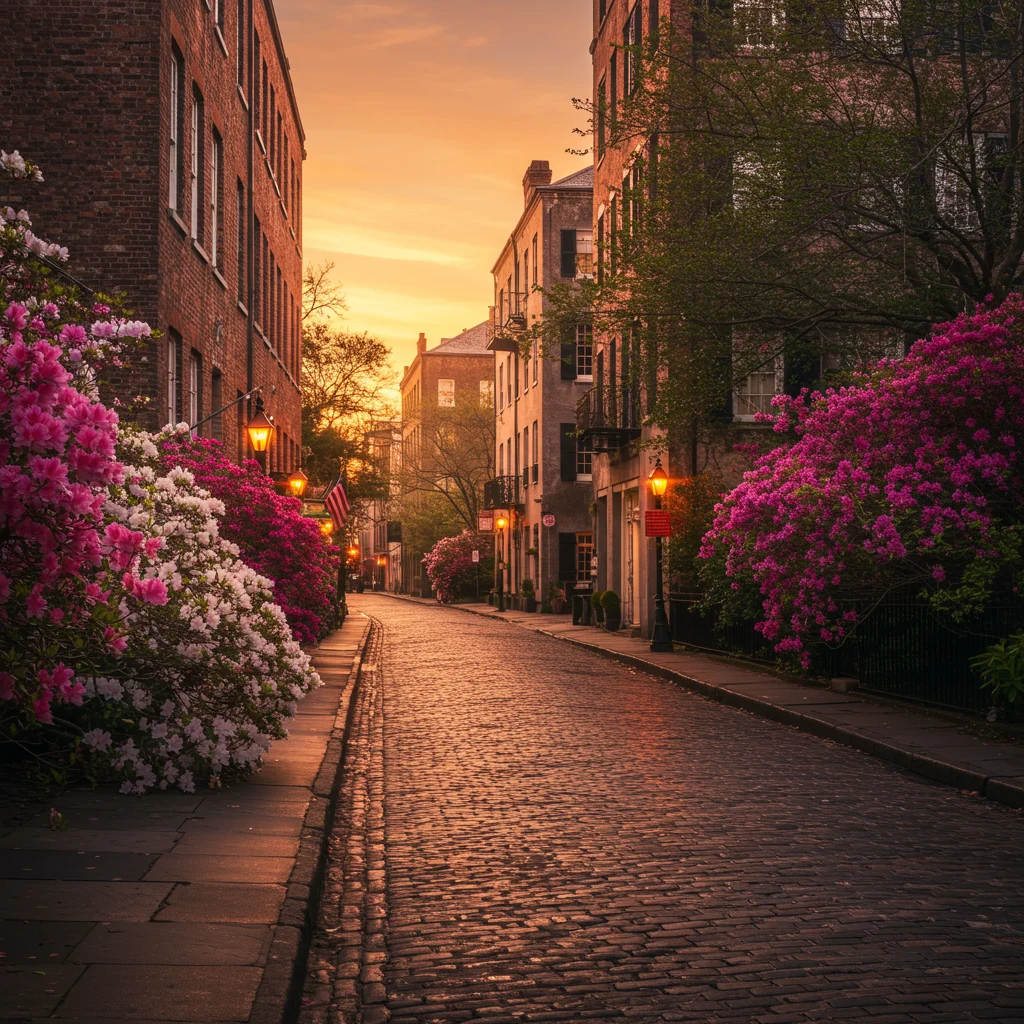
Later architects continued this tradition, ensuring that even new buildings respect the historic context.
African American Influence on Local Architecture
The contributions of African American artisans and builders are evident throughout Savannah and Charleston. Skilled laborers crafted wrought-iron gates, brickwork, and intricate plasterwork, often without formal recognition.
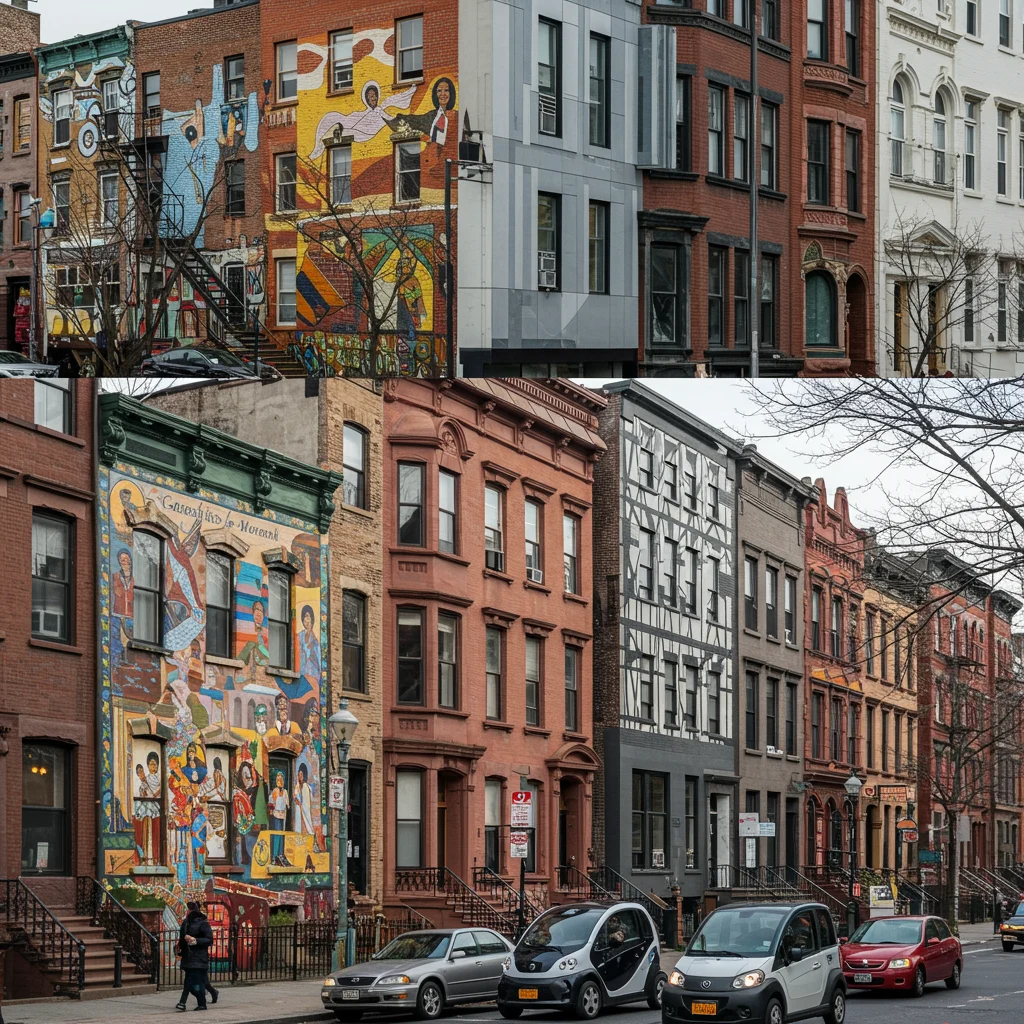
Their legacy endures in the beauty and durability of the region’s most iconic structures.
Preservation Efforts: How Savannah and Charleston Protect Their Heritage
Both cities have established strong preservation organizations and ordinances to safeguard their architectural treasures. The Historic Savannah Foundation and the Preservation Society of Charleston work with residents and businesses to maintain the integrity of historic districts.
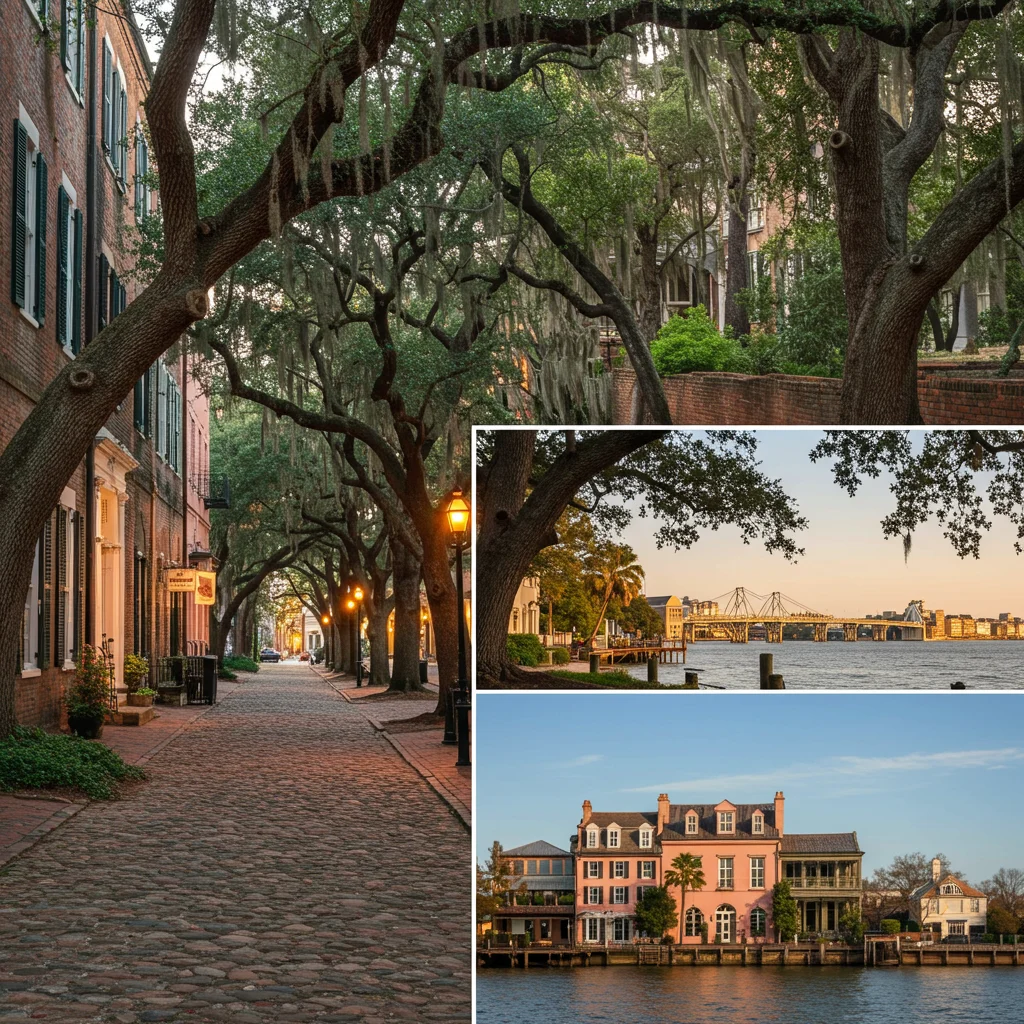
As experts often say:
“Historic preservation is not just about saving old buildings—it’s about sustaining the stories, memories, and craftsmanship that define a community’s soul.”
Regular events, grants, and education campaigns help ensure that these cities remain living testaments to their past.
Haunted Architecture: Ghost Tours in Historic Buildings
Savannah and Charleston are famous for their ghost tours, which blend history with spine-tingling tales of the supernatural. Candlelit walks through shadowy streets and haunted mansions add a layer of mystery to the architectural experience.

These tours often include access to sites not open during the day, offering a different perspective on the city’s history.
What to Expect on an Architecture Tour: Frequently Asked Questions
We are often asked about the pace, format, and highlights of architecture tours. Most tours last one to three hours and include both exterior and, occasionally, interior visits. Guides provide context, anecdotes, and answer questions along the way.
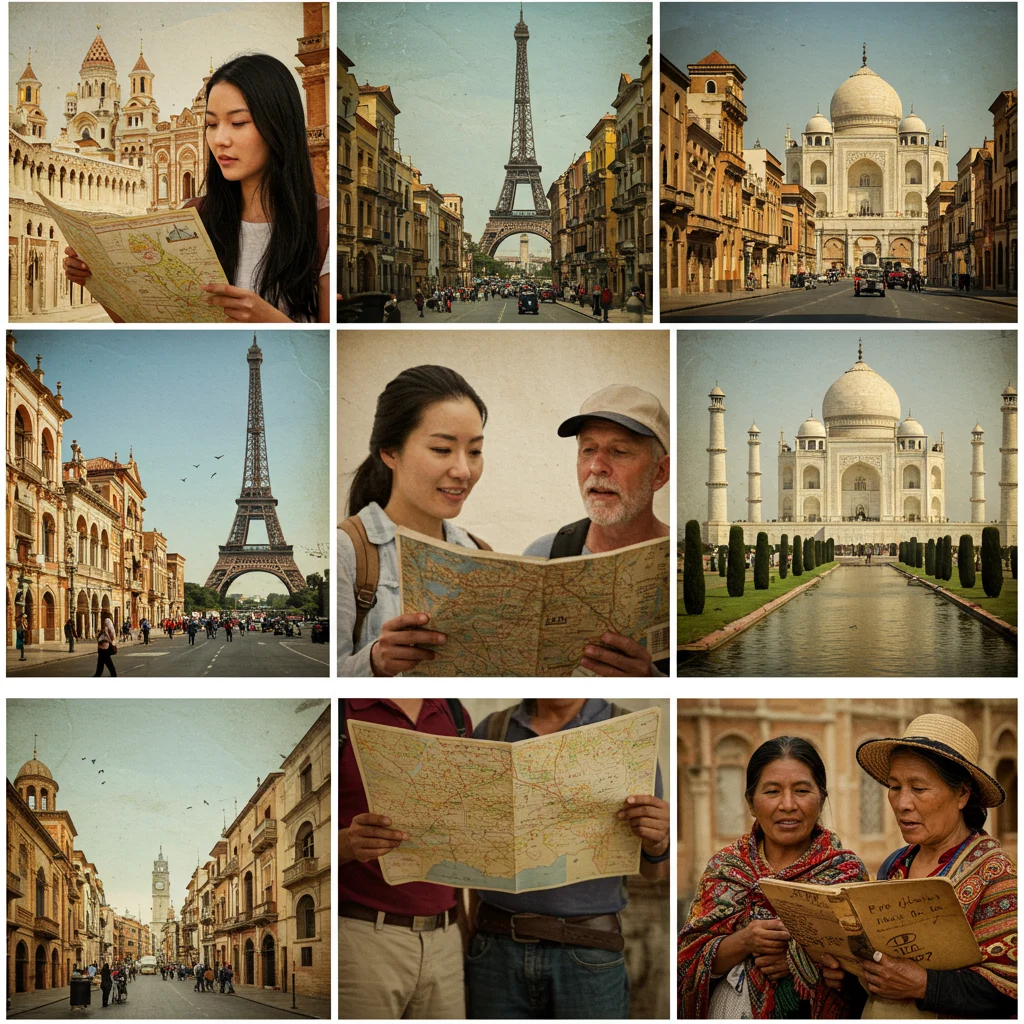
Participants should be prepared for walking, standing, and occasional changes in weather.
Accessibility: Are Architecture Tours Suitable for Everyone?
Many architecture tours accommodate guests with mobility challenges, though some historic buildings may have stairs or uneven surfaces. It’s wise to check accessibility details in advance with tour providers.
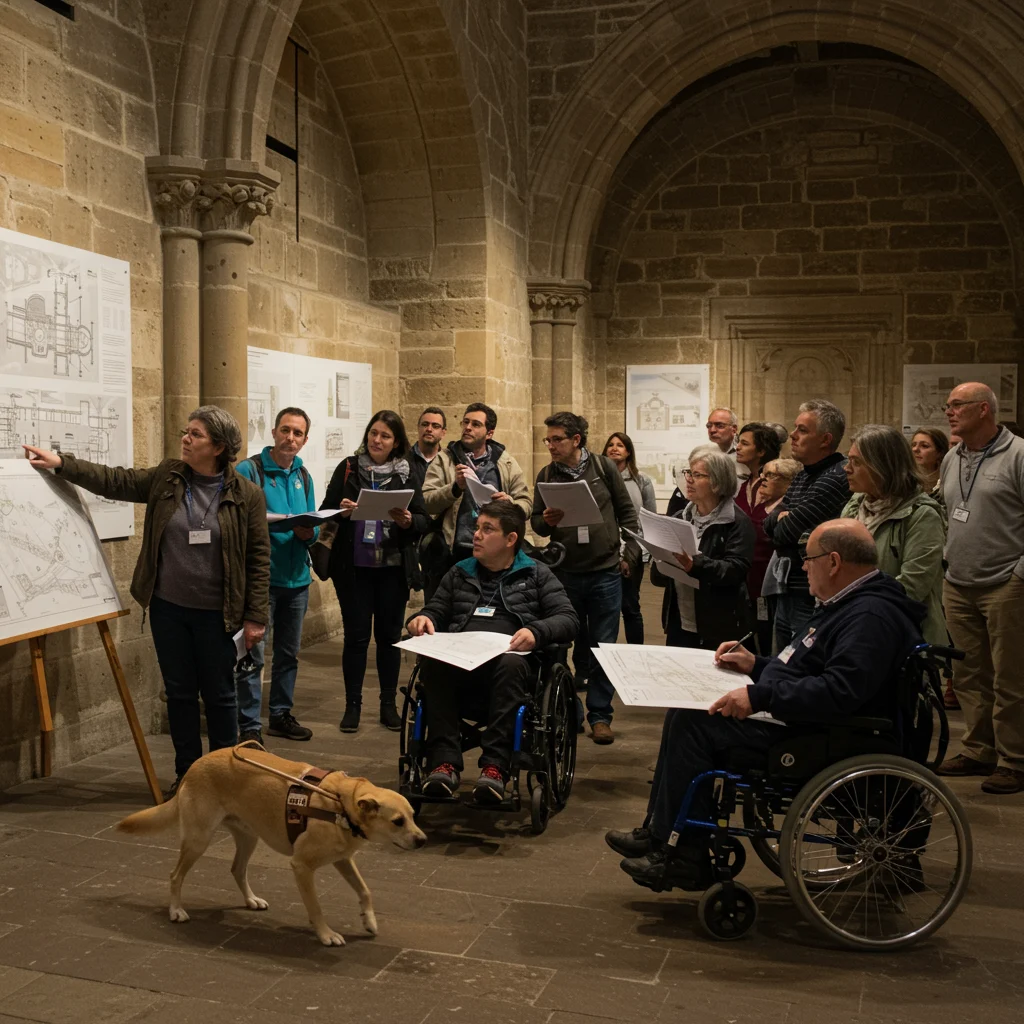
Some tours offer alternative routes or transportation for those who need it, ensuring that history remains accessible to all.
Family-Friendly Architecture Tours: What Are the Options?
Families traveling with children will find a range of family-friendly architecture tours. Some guides cater to younger audiences with interactive stories, scavenger hunts, and hands-on activities.
Many historic sites offer special programming to engage visitors of all ages.
Photography Tips for Capturing Historic Architecture
Capturing the beauty of historic architecture requires attention to light, angle, and detail. We suggest:
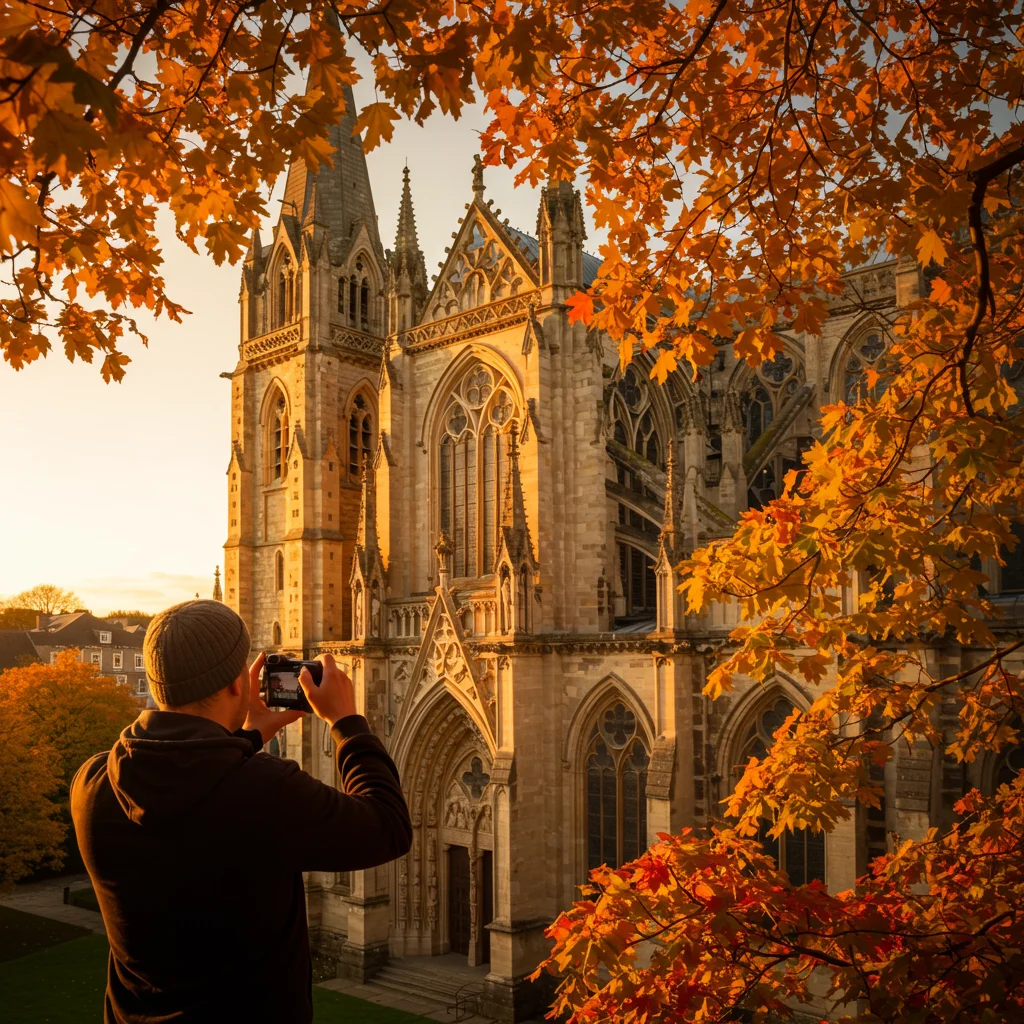
- Shooting in early morning or late afternoon for softer light
- Framing shots to include both architectural features and surrounding gardens
- Using a polarizing filter to enhance colors and reduce glare
- Zooming in on decorative elements such as ironwork and stained glass
Patience and experimentation yield the most rewarding images.
Best Spots for Architectural Photography in Savannah
Top locations for photography in Savannah include Forsyth Park, Jones Street, Monterey Square, and the Cathedral of St. John the Baptist. Early morning mist or golden sunset light brings out the textures and colors of brick, stucco, and foliage.
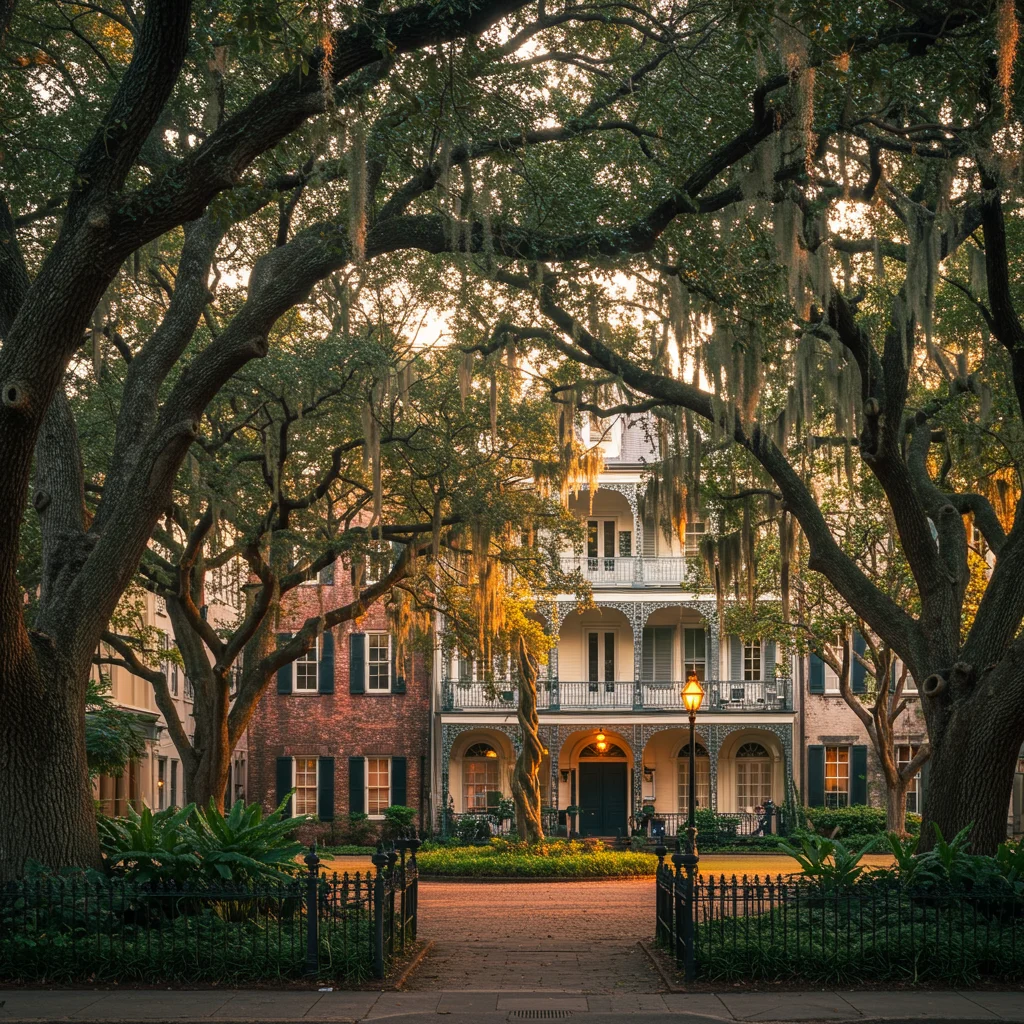
Quiet corners and hidden courtyards offer opportunities for unique, intimate compositions.
Best Spots for Architectural Photography in Charleston
In Charleston, photographers flock to the Battery, Rainbow Row, the French Quarter, and hidden alleys such as Philadelphia Alley. Reflections in the harbor and the interplay of sunlight on pastel facades create memorable images.

The city’s steeples and wrought-iron gates provide dramatic focal points for both novice and experienced photographers.
Local Museums and Visitor Centers for Architecture Enthusiasts
Both cities offer museums and visitor centers dedicated to architecture and history. In Savannah, the Savannah History Museum and Davenport House Museum provide context for the city’s development. Charleston’s Historic Charleston Foundation and the Old Slave Mart Museum offer exhibits on architecture and preservation.

Staff at these centers can recommend additional resources and upcoming events for visitors.
Combining Architecture Tours with Culinary Experiences
For a richer sense of place, we recommend combining architecture tours with culinary adventures. Many tours include stops at historic taverns, tea rooms, or local markets, allowing us to savor the flavors of the region while learning about its built environment.
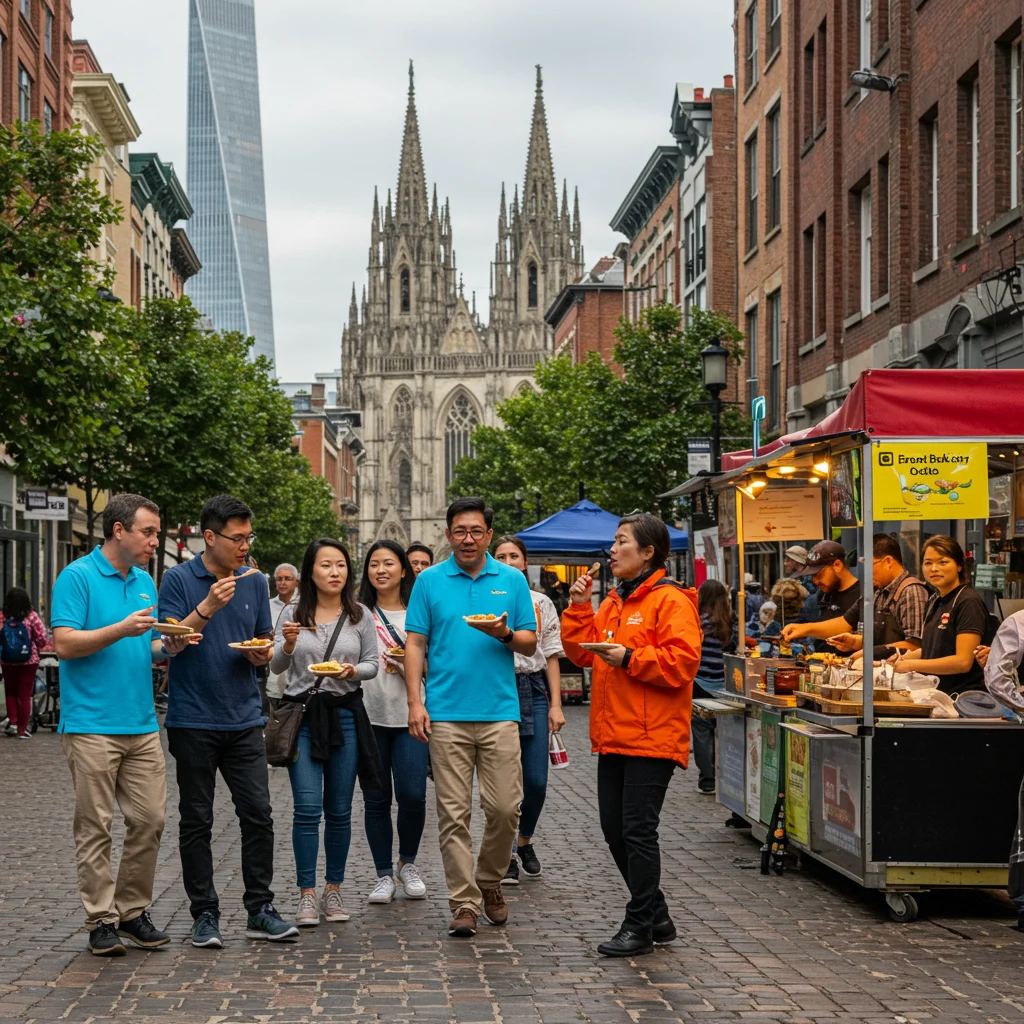
This approach offers a multisensory understanding of the cities’ cultural heritage.
Unique Accommodations in Historic Buildings
Staying in a historic inn or bed-and-breakfast provides an immersive experience. Savannah and Charleston boast numerous lodging options housed in restored mansions, carriage houses, and former warehouses.
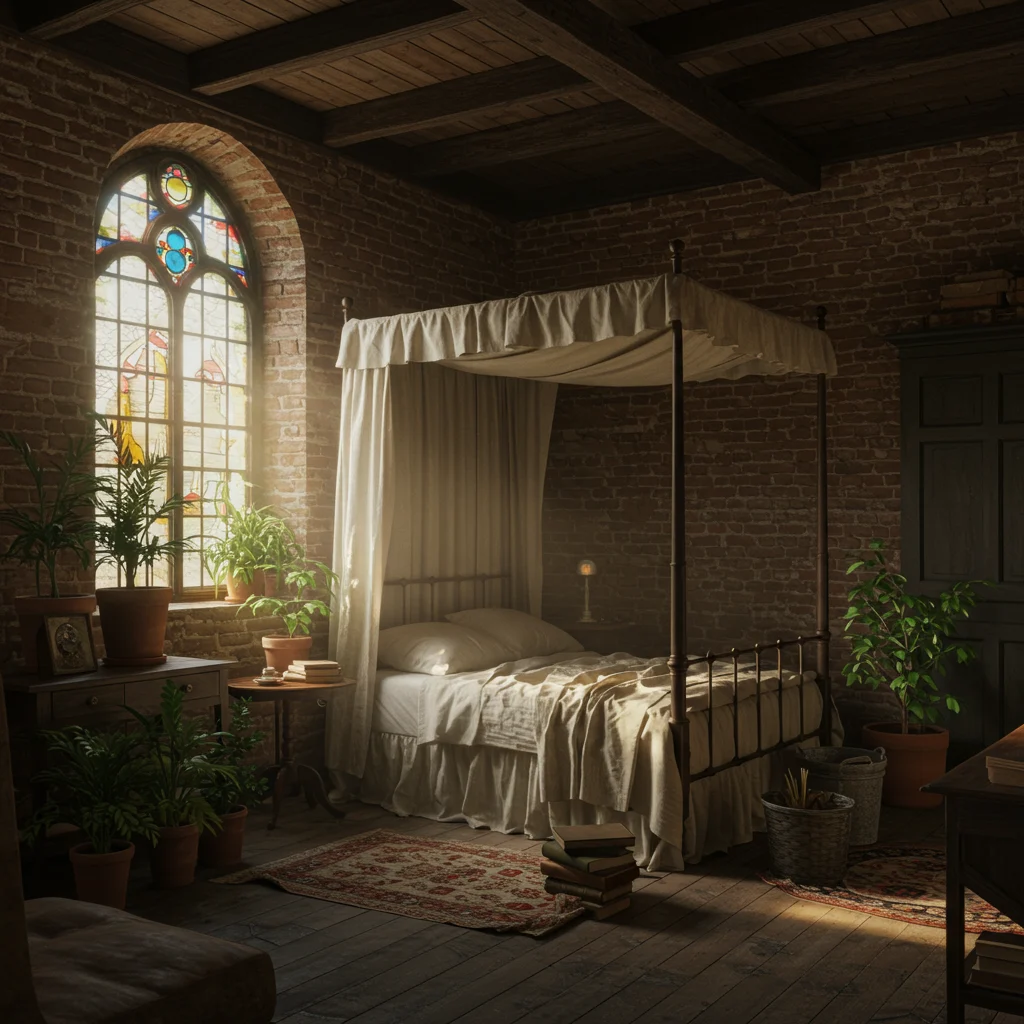
Exposed brick, antique furnishings, and period details create an atmosphere of comfort and authenticity.
Sustainable Tourism and Historic Preservation
Responsible tourism supports historic preservation by encouraging respectful visitation and economic investment in restoration. Both cities promote green initiatives, such as walking tours and eco-friendly lodging, to protect their architectural legacy for future generations.

We can all contribute by supporting local businesses, respecting private property, and participating in preservation programs.
How to Support Ongoing Preservation Efforts
We encourage visitors to donate to local preservation organizations, attend fundraising events, and volunteer for clean-up or restoration projects. Every contribution, large or small, helps maintain the beauty and integrity of these remarkable cities.
Purchasing books, souvenirs, or tour tickets from reputable sources further supports these efforts.
Recommended Books and Resources for Architecture Lovers
For those eager to deepen their knowledge, we suggest:

- “Savannah Style: Mystery and Manners” by Susan Sully
- “Charleston Architecture and Interiors” by Susan Sully
- Guides from the Historic Savannah Foundation and Preservation Society of Charleston
- Online resources and documentaries from local PBS affiliates
These works offer context, vivid imagery, and expert analysis for enthusiasts at every level.
Upcoming Architecture Events and Festivals
Throughout the year, both cities host architecture events such as home and garden tours, preservation weeks, and lectures. Spring and fall are particularly busy, with opportunities to visit private homes and gardens not usually open to the public.

Check local tourism websites for current schedules and ticket information.
Sample Itineraries: One-Day and Weekend Architecture Tours
A well-planned itinerary maximizes your time and enjoyment. For a one-day visit, focus on the highlights of the Historic District, including guided tours and key landmarks. A weekend allows for deeper exploration, including side trips to plantations or lesser-known neighborhoods.
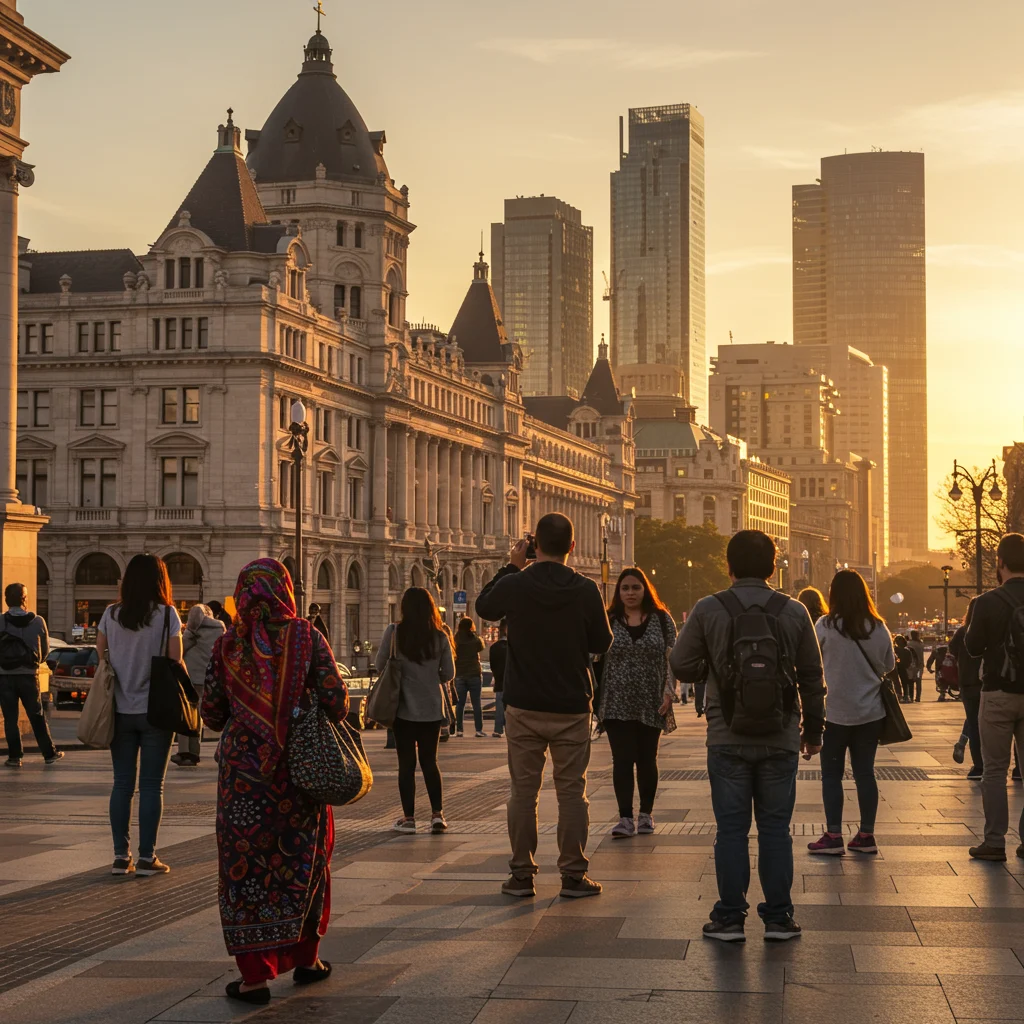
We suggest balancing structured tours with free time for spontaneous discovery and relaxation.
How to Book on Viator
Booking architecture tours and related activities is simple and secure with Viator. Their platform offers a wide range of options, from guided walking tours to exclusive access to historic homes and gardens.
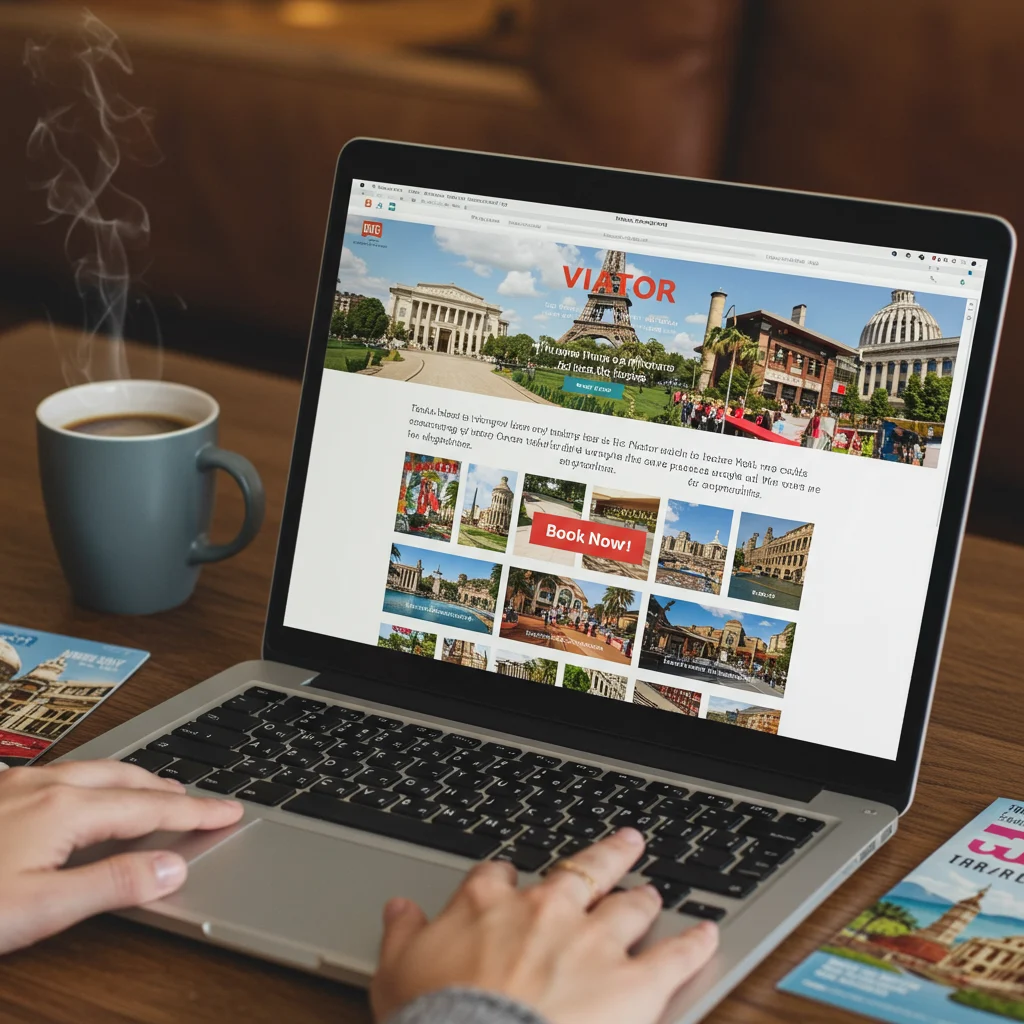
To plan your trip or find tours tailored to your interests, visit their website and browse reviews, schedules, and prices. Viator’s user-friendly booking process ensures a smooth start to your historical adventure.
If you need to book activities at the last minute or want to compare options, Viator provides up-to-date availability and instant confirmation.
Conclusion: Embracing the Architectural Legacy of Savannah and Charleston
Savannah and Charleston invite us to slow down, look closely, and appreciate the artistry, resilience, and cultural diversity that shaped their architectural legacy. Each street corner, church spire, and garden gate tells a story of ambition, adaptation, and community pride.
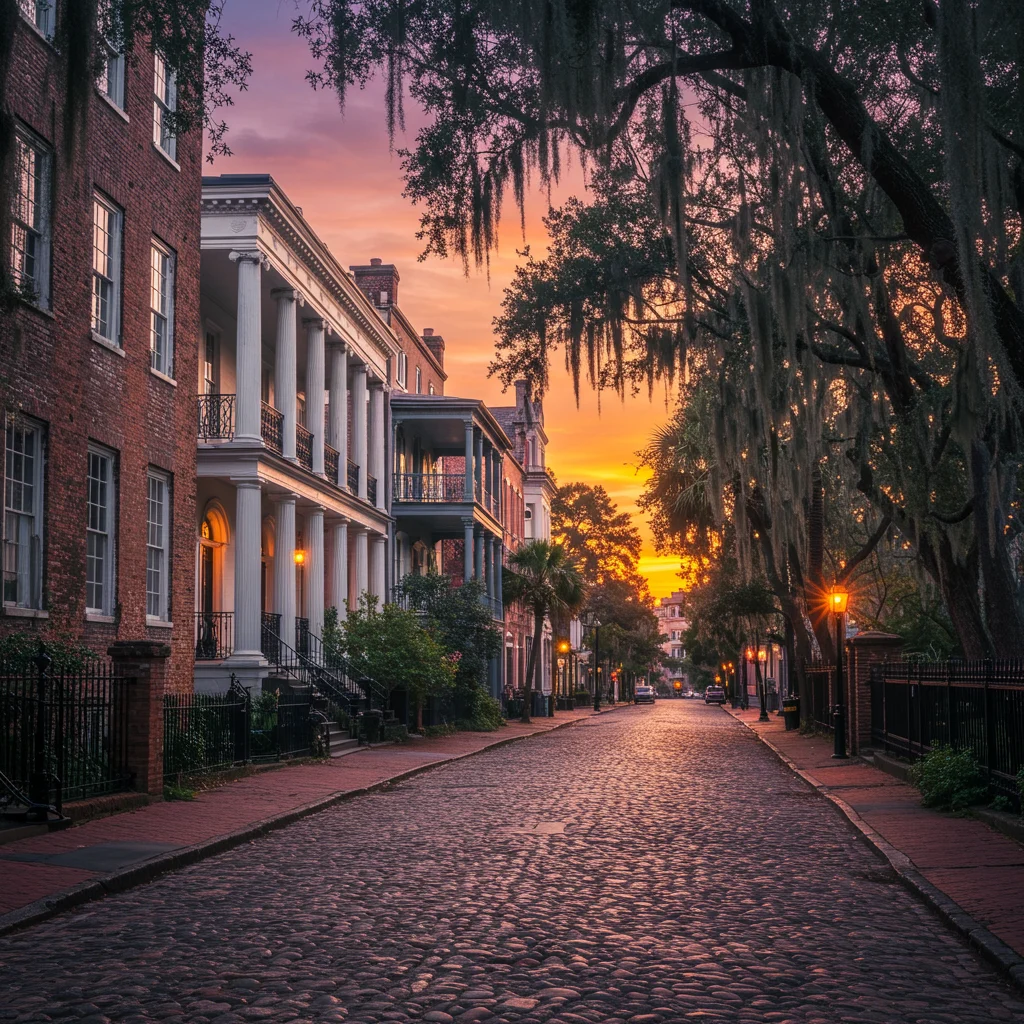
By touring these cities with curiosity and respect, we help preserve their beauty for future generations. At Unisho, we believe that meaningful travel begins with understanding—and nowhere is this more rewarding than in the streets and squares of these Southern gems. For more travel inspiration and resources, visit Unisho.
Frequently Asked Questions About Historical Architecture Tours
What should I wear on an architecture tour? Comfortable walking shoes and weather-appropriate clothing are best. Consider bringing a hat and sunscreen for summer visits.
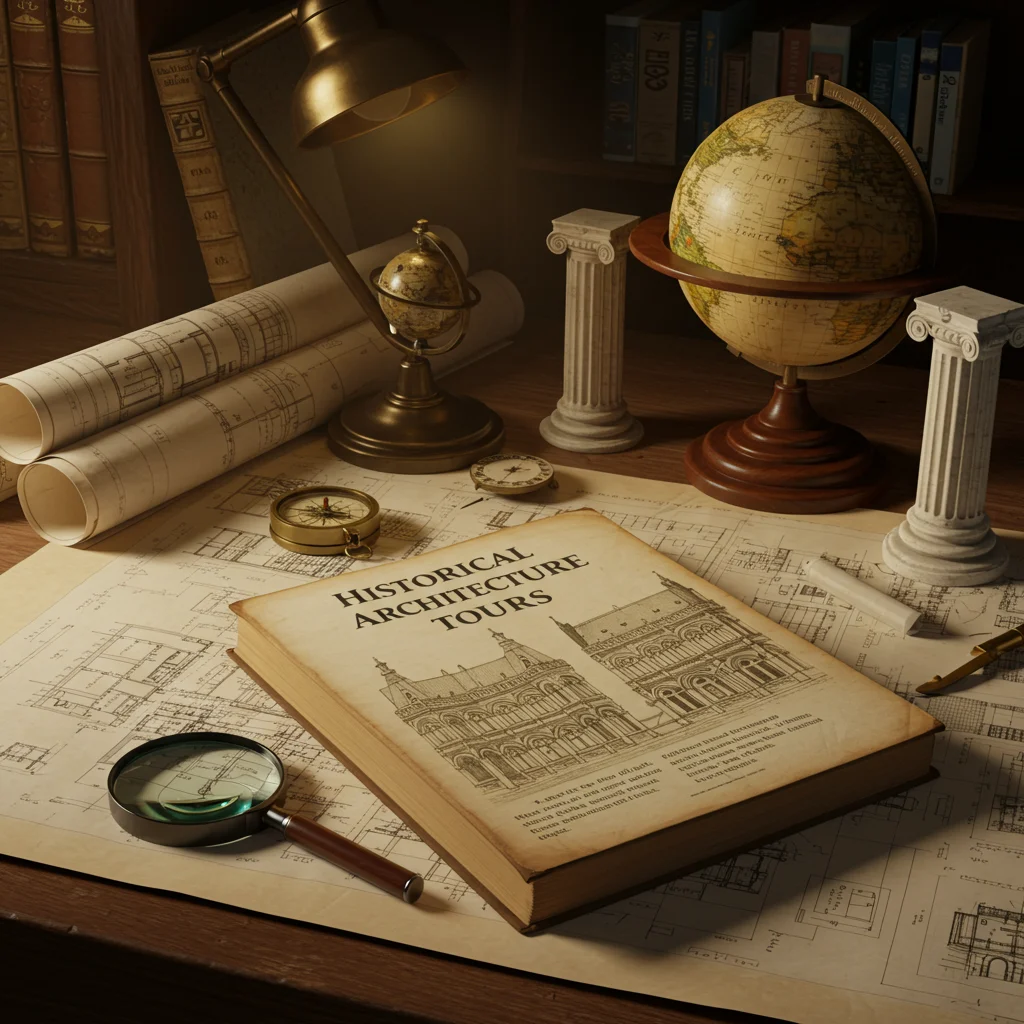
Can I visit the interiors of historic buildings? Many tours include interior access, but some homes are private or open only during special events. Check tour descriptions for details.
Are photography and video allowed? Exterior photography is generally welcome, but interior policies vary. Always ask before photographing inside private homes.
Key Takeaways for Planning Your Visit
A little preparation goes a long way in making your architecture tour memorable. Select the right season, choose tours that match your interests, and consider combining guided walks with self-guided exploration. Respect local customs and preservation efforts to ensure a positive impact.

If you are inspired by other destinations with rich architectural heritage, you may enjoy reading about our Valletta walking tour for a glimpse into Malta’s historic capital.
Contact Information for Local Tour Providers
To plan your visit, reach out to official tourism boards, preservation societies, and licensed tour operators in Savannah and Charleston. Most provide online booking and detailed information about available tours, accessibility, and special events.

For those interested in regional excursions, consider expanding your itinerary with a visit to Louisiana’s plantations as described in our Oak Alley Plantation tour guide.
Savannah’s Colonial Era Architecture: What Remains Today?
Few Colonial-era structures survive in Savannah due to fires and urban renewal, but notable examples include the Pirates’ House and the Herb House. These buildings offer insight into the city’s earliest days and the challenges of colonial life.
Charleston’s Colonial Era Architecture: Surviving Examples
Charleston preserves several Colonial buildings, such as the Old Powder Magazine and the Pink House. Their thick walls and steep roofs reflect both function and style in the city’s formative years.
Federal and Greek Revival Styles in Savannah
Savannah’s Federal and Greek Revival homes display elegant symmetry, tall windows, and classical details. The Davenport House and Telfair Academy are prime examples, blending European inspiration with Southern materials.
Federal and Greek Revival Styles in Charleston
Charleston’s Federal and Greek Revival architecture is evident in stately homes like the Nathaniel Russell House, which features a spiral staircase and airy proportions. These styles signified refinement and prosperity in the early 19th century.
Gothic Revival and Italianate Influences in Savannah
The Gothic Revival style flourished in Savannah’s churches and civic buildings, with pointed arches, stained glass, and decorative stonework. Italianate influences appear in elaborate cornices and brackets on later townhouses.
Gothic Revival and Italianate Influences in Charleston
Charleston’s Gothic Revival and Italianate buildings include the French Huguenot Church and the Fireproof Building. These structures combine vertical lines, ornate ironwork, and a sense of drama in their design.
Notable Mansions and Plantations Near Savannah
Near Savannah, plantation homes such as Wormsloe and the Owens-Thomas House offer a glimpse into the region’s agricultural and social history. These estates are known for their grand avenues, live oaks, and stately architecture.
Notable Mansions and Plantations Near Charleston
Charleston’s nearby plantations, including Drayton Hall and Boone Hall, feature Greek Revival and Georgian mansions surrounded by stunning gardens and avenues of oaks. These sites interpret the complex history of the Lowcountry.
The Influence of the Port on Savannah’s Architecture
Savannah’s port shaped its architectural landscape, attracting merchants and craftsmen from around the world. River Street’s warehouses and cotton exchanges reflect the city’s commercial past and global connections.
The Influence of the Port on Charleston’s Architecture
Charleston’s success as a port city brought wealth and diversity, evident in the range of architectural styles and materials. The Custom House and Market Hall are reminders of the city’s pivotal role in trade.
Savannah’s Jones Street: Why Is It So Famous?
Jones Street is celebrated for its Victorian row houses, brick sidewalks, and canopy of live oaks. Its charm and preservation make it a favorite among photographers and history lovers alike.
Charleston’s Battery and Waterfront Architecture
The Battery showcases grand mansions facing Charleston Harbor, with wide piazzas and sweeping views. These homes symbolize the city’s maritime heritage and architectural grandeur.
Hidden Architectural Gems Off the Beaten Path in Savannah
Savannah rewards the curious with hidden gems such as small alleys, carriage houses, and lesser-known squares. These quiet corners offer a more intimate experience of the city’s history and design.
Hidden Architectural Gems Off the Beaten Path in Charleston
In Charleston, secret gardens, tucked-away courtyards, and narrow lanes like Longitude Lane reveal the city’s quieter side. These spots provide peaceful retreats and unique architectural details.
Tips for Respectful Touring in Historic Neighborhoods
Respect for residents and preservation efforts is vital. We recommend:
- Staying on sidewalks and public paths
- Speaking quietly, especially in residential areas
- Not touching or leaning on historic structures
- Following posted photography guidelines
A courteous approach ensures a positive experience for all.
What Are the Most Instagrammable Architecture Spots?
Top Instagram spots include Savannah’s Forsyth Park, Jones Street, and the Cathedral of St. John the Baptist, as well as Charleston’s Rainbow Row, the Battery, and St. Philip’s Church. Each offers striking backdrops for memorable photos.
Family Activities Alongside Architecture Tours
Both cities offer family-friendly activities such as carriage rides, interactive museum exhibits, and outdoor parks. Combining these with architecture tours keeps young travelers engaged and entertained.
Recommended Walking Routes for Architecture Enthusiasts
We suggest starting at Savannah’s Bull Street or Charleston’s King Street and branching into side streets and squares. Self-guided walking maps are available at visitor centers and online.
What Should You Bring on an Architecture Tour?
Essential items include comfortable shoes, water, a camera, sun protection, and a notebook for jotting down observations. A lightweight rain jacket is also useful for unpredictable weather.
How to Book Last-Minute Architecture Tours
For last-minute bookings, check with local visitor centers or use platforms like Viator for real-time availability and instant confirmation.
Accessibility Considerations for Historic Buildings
While many historic sites are accessible, some have stairs or uneven surfaces. Contact tour operators in advance to arrange accommodations or alternative routes as needed.
Are Pets Allowed on Architecture Tours?
Policies vary by tour and site. Some outdoor tours welcome leashed pets, while most historic interiors do not. Always check in advance to avoid disappointment.
Best Souvenirs for Architecture Lovers
Favorite souvenirs include books on local architecture, prints or photographs of iconic buildings, and handcrafted items from museum gift shops. These keepsakes provide lasting reminders of your journey.
Savannah’s Owens-Thomas House: A Closer Look
The Owens-Thomas House is a masterpiece of English Regency architecture, featuring symmetrical facades, ornamental plasterwork, and one of the earliest indoor plumbing systems in the U.S. Guided tours highlight both the grandeur of the main house and the stories of those who lived and worked there.
Charleston’s Nathaniel Russell House: A Closer Look
The Nathaniel Russell House stands out for its spiral staircase and elegant Federal style. Meticulous restoration allows visitors to experience the home as it appeared in the early 1800s.
Savannah’s Cathedral of St. John the Baptist: Architectural Details
This Gothic Revival cathedral dazzles with its twin spires, stained glass windows, and ornate woodwork. The play of sunlight through rose windows creates a shifting tapestry of color and light throughout the day.
Charleston’s St. Michael’s Church: Architectural Details
St. Michael’s Church, Charleston’s oldest religious building, features a Georgian design with a towering white steeple and intricate woodwork. Its clock and bells have marked the passage of time for generations.
Savannah’s Mercer-Williams House: History and Design
The Mercer-Williams House combines Italianate architecture with a storied past. Its red brick facade, arched windows, and lush garden reflect both European influences and Southern sensibilities.
Charleston’s Aiken-Rhett House: History and Design
The Aiken-Rhett House offers a rare look at an urban plantation preserved in near-original condition. Visitors can explore the main house, slave quarters, and carriage house, gaining insight into Charleston’s complex history.
“Disclaimer: This information is accurate to the best of our knowledge; however, there may be changes or mistakes. Please verify exact details on the Viator booking page.”

